This is more than a travel guide to San Francisco. This is the camper’s guide to all things outdoorsy, in and around The City by the Bay.
There are so many things to do in San Francisco, all tightly packed into just 46 miles of a compact, waterfront city. But a visit to San Francisco for people who love to camp means venturing beyond the manicured, metropolitan parks, before or after the obligatory Painted Ladies photo-op. The Bay Area, ringed as it is with magnificent headlands, redwood forests, protected parks, and stellar trails, has a serious outdoor pedigree.
In addition to Levi’s jeans and Rice-A-Roni, San Francisco is the birthplace of the modern mountain bike, American trail running, and neoprene wetsuits. That’s no surprise in a city known for both stunning, one-of-a-kind landscapes and ingenuity. The hills and fog of San Francisco are just one part of the Bay Area’s diverse ecology.
If you’re packing your bag for a trip to San Francisco, this guide is for you.
Things to do in and Around San Francisco: An Adventurer’s Guide
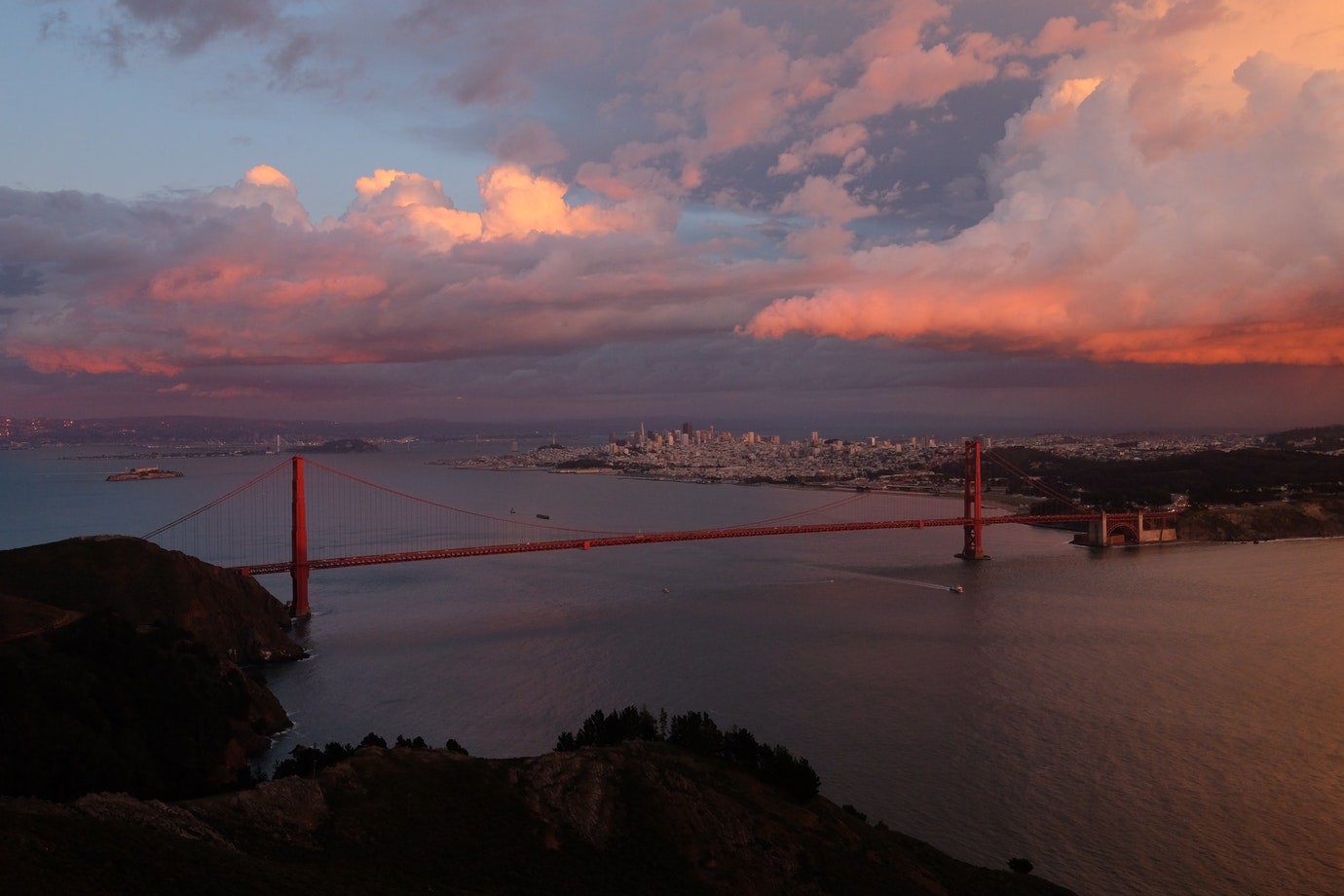
Image by The Dyrt camper Patrick O.
Looking for something specific in this guide? Feel free to choose your own adventure:
- Local History
- Weather and Tourism Season
- Packing List for Campers
- Outdoor Gear Shops
- Adventure and Tourism Companies
- Outdoorsy Things to do in the City
- Nearby Hiking Trails
- Surf Spots
- Go Climbing
- Biking Around Town & Beyond
- Campgrounds Near the City
- Instagram Inspiration
A Brief History of San Francisco Land and Recreation
The city’s beginnings are humble; first settled by the Ohlone people in 3000 B.C., the area’s wild wetlands were eventually colonized by Europeans into what was named Yerba Buena — a name borrowed from a native herb still grown around the area today. After the city was claimed in the Mexican-American war and established in 1850, it didn’t take long for conservation efforts to begin, even as San Francisco rapidly expanded during the Gold Rush.
In 1864, Abraham Lincoln officially protected the Yosemite Valley and the Mariposa Giant Sequoia Grove. Twenty-eight years later, The Sierra Club was founded in the still-new Yosemite park with heavy support from San Franciscans. In between, in 1871, Golden Gate Park was established as 1,017 acres of sand dunes and marshes on the Bay.
At the end of the last century, organized efforts were under way to protect the Bay and prevent more of the filling that had reduced its size by a third since San Francisco was founded. The back-to-the-land movement of the 1960s and 70s had strong roots in the Bay Area’s counterculture. It even spilled into new national food trends in the 70s via the Berkeley restaurant Chez Pannise’s emphasis on seasonal, local ingredients.
The Golden Gate Recreation Area was established in 1972, spanning three counties. In 1996, Congress officially turned the 1,500-acre Presidio from a military base into a park now beloved by many for outdoor recreation, adding even more acreage to San Francisco’s outdoor spaces.
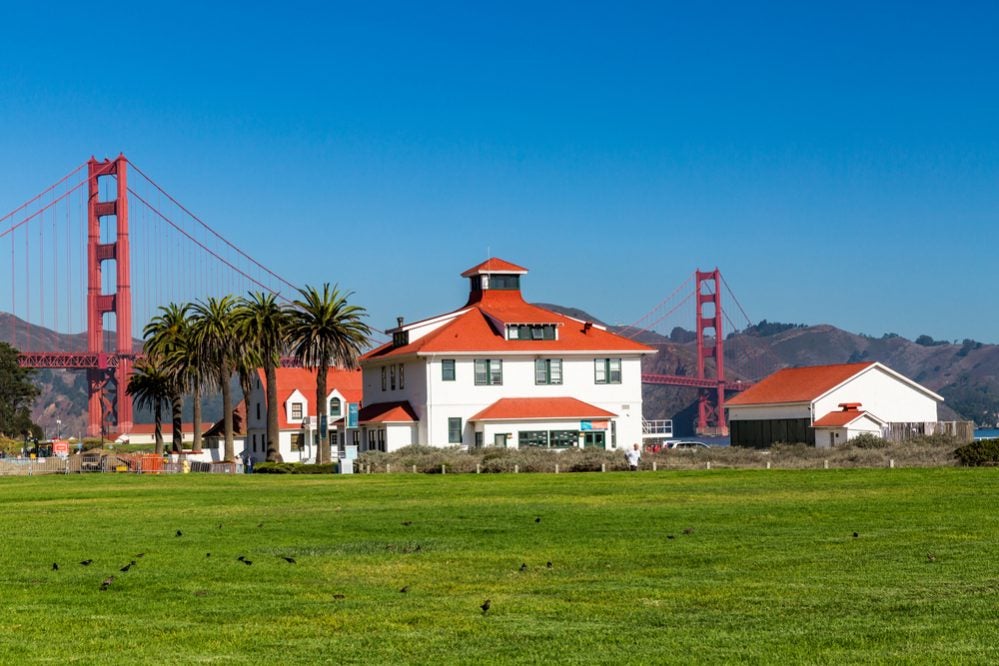
The Golden Gate National Parks Conservancy supports and partners with a variety of parks in the San Francisco area, including Fort Funston, Muir Woods, Lands End, Alcatraz Island, Crissy Field, and the Presidio. Founded in 1981, one of their first projects was a plant nursery at Fort Funston. There’s been some controversy recently as the huge fundraising success of the GGNPC has increased its clout, and its evolving mission sometimes seems to clash with San Franciscans hopes for these beloved lands. Never the less, the GGNPC is a powerhouse that is a huge part of why San Franciscans have so many natural places to enjoy close to the city.
Those are just the broad strokes of how this city has tried to balance its reputation for growth with some of its most precious outdoor resources. Today, there are 14 national parks, historic sites and monuments spanning millions of acres in and around San Francisco, and many more further afield. If you want to learn more about the city’s geology, geography, and how you can explore it layer by layer, a great resource is Gary Kamiya’s Cool Grey City of Love: 49 Views of San Francisco. You’ll find, as he has, that there’s no shortage of ways to go from skyscraper offices to sky-scraping Redwoods in the city on the water.
San Francisco’s Weather Allows for Year-Round Adventures
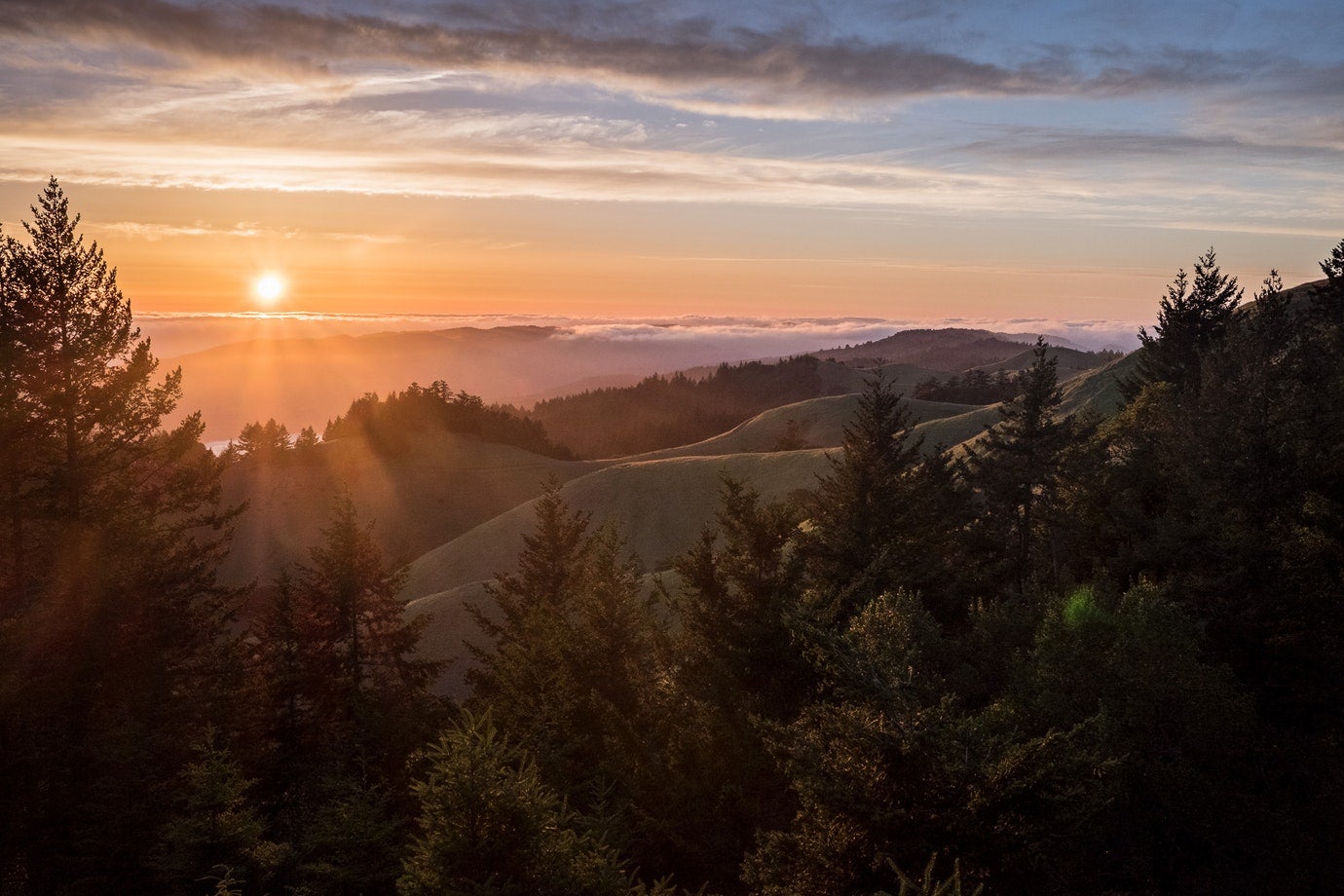
Image by The Dyrt camper Patrick O.
It can be a little tricky figuring out the best time of year to visit the Bay Area, seeing as you can find radically different climates and ecosystems depending on the area you’re in. San Francisco proper can be chilly even in the summer, while the East Bay can get scorching hot. To find more mild temperatures across the whole Bay Area, fall is often the warmest, most pleasant season.
San Francisco and Berkeley typically see highs in the 60s and towards the 70s, with lows in the 50s. Further east, you’ll start to see highs creep into the 80s with lows in the 50s. The weather is fairly consistent year-round, with only slight dips in the winter, though the wind, rain, and fog will affect that feeling. The region tends to be at its driest April through October, when you’ll also find the warmest temperatures. You also tend to see more visitors in the summer than other seasons, despite the lack in major weather variation throughout the year.
Outside the urban areas, temperatures on average tend to be warmer, and offer less frequent fluctuation of temperature and precipitation. That being said, the Bay Area is packed full of micro-climates. Individual neighborhoods can have their own weather pattern. So depending upon where you stay in the city on the bay, your weather may differ.
hr
The Ultimate Packing List for SF Campers
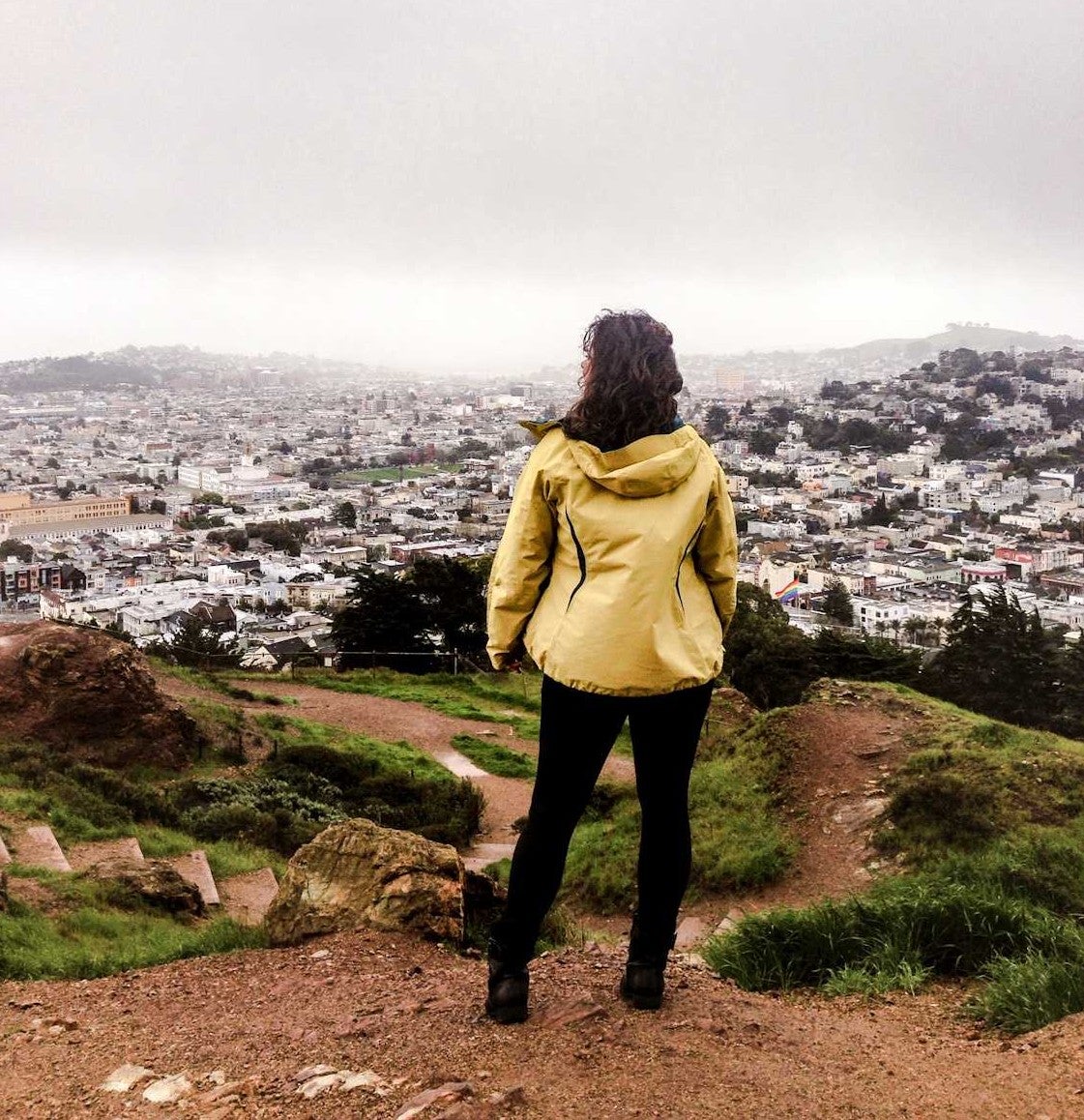
Image by Meghan O’Dea on Instagram
We’re not going to cover every item you’ll need on your camping trip to San Francisco, but here are some items you’ll definitely want to consider.
- A puffy jacket, windbreaker, and rain jacket are a must in San Francisco. The weather can change rapidly, and even on the best and brightest days you never quite know when a chill might roll in from the Pacific along with the city’s famous fog (which has its own nickname and Twitter account!)
- NO cotton. You don’t really want it in your camping kit anyways, but especially not in damp, chilly NorCal.
- Instead, think light layers in breathable, moisture-wicking fabrics.
- In the colder months, wool sweaters and thick-weave pants are your friends.
- By the same meteorological logic, be sure your tent, hammock, or other camp bedding is ready to repel Karl The Fog.
- Pack an under quilt for your hammock (there are lots of great trees to hang from in San Francisco campgrounds) to stay cozy, and a rain fly, too. Make sure your tent has a good footprint and fly.
- Practice setting up tarps. San Francisco isn’t as rainy as, say, Portland and Seattle to the north. But you definitely want to think “moisture barrier.”
- Paracord is part of many hikers and campers’ survival kits, but having extra can come in handy, too, for reinforcing your tent’s guylines to nearby driftwood or trees, or arranging tarps over your picnic table. You’ll actually need the extra reinforcement — the Bay Area gets windy!
- A watch cap or beanie is the perfect way to keep your head warm and dry, and to tame the post-fog frizzies.
- Hiking boots or shoes are a must, as San Francisco is infinitely walkable, even if you aren’t hitting the trail. Boots are definitely better than sneakers or slip-ons for both the streets and the wilderness, since the hills can leave you wanting both ankle support and traction.
- Get a rainfly for your pack. Gregory makes handy backpack rain covers.
- Pack a backup fire-starting tool. Not to overemphasize the whole chilly and damp thing, but having more than one way to spark tinder is a good idea. In addition to a lighter and matches, pack a flint-style firestarter and practice using it ahead of time.
- Wineskins. Napa and Sonoma are under an hour from the city, and it’s better to pack your favorite vino in a useable, non-breakable, way-lighter wineskin than a clunky glass bottle you need to carry in and out.
- Don’t forget a vacuum seal camping growler, either. San Francisco might be better known for wine, but its beer scene is poppin’, too.
San Francisco Gear Shops To Keep On-Call
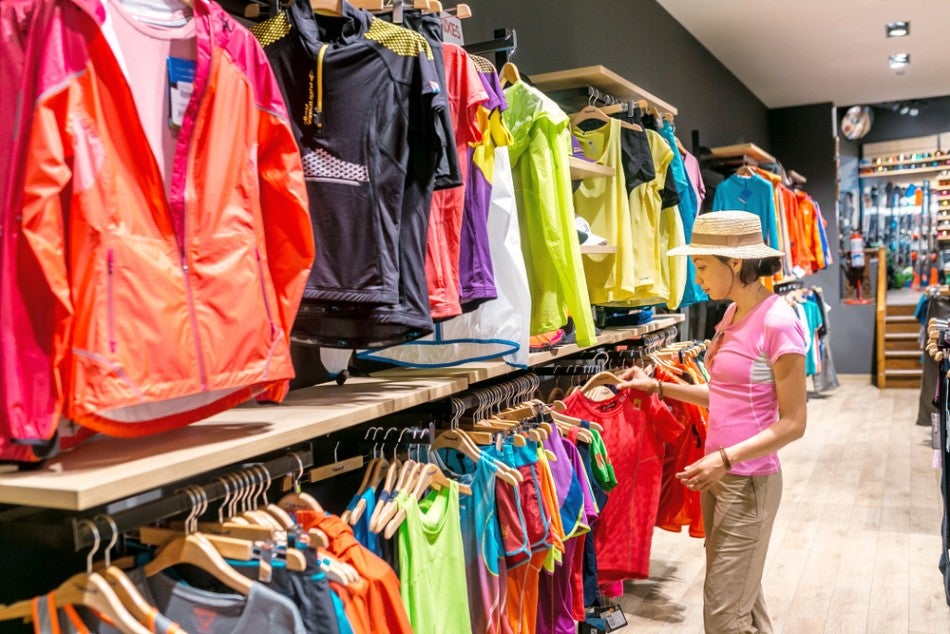
There’s no shortage of outdoor gear stores in San Francisco. You’ll find REI, North Face, Prana, and Patagonia. There’s a Big Five Sporting Goods south of Sunset. Then there are a few that you might not be familiar with if you’re from outside the Bay Area, including:
- Alite Designs, a small atelier dedicated to “urban-dwellers who love to go camping,” located in the trendy Mission District.
- Mission Workshop, which shares a name with its neighborhood, carries its line of made-in-the-U.S.A. backpacks and other technical gear that look as good coming out of the office as they do on the trail.
- Triple Aught Design provides tactical outdoor gear from San Francisco’s Dogpatch neighborhood, including backpacks, lights, and survival tools.
- Sports Basement not only sells a wide variety of athletic equipment, they also have gear rentals.
- AETHER Apparel, an L.A.-based company, has a flagship store in the Hayes Valley district that’s housed in stacked shipping containers. They make functional, fashionable apparel that suits modern San Fransisco’s athleisure ethos.
- Prometheus Design Werx, created by one of the original founders of Triple Aught designs who wanted to find a way to make tactical gear that didn’t look like what you’d find at the Army Surplus store or at your local REI, but would stand up as well as military or police gear.
- Lost Coast Outfitters bills itself as the premier San Francisco fly fishing outfitter, conveniently located right in the heart of downtown.
- Last Minute Gear in the South Mission District is just the thing if you’re in a hurry or on a budget. They not only offer new items for sale, but also rent out new gear and let you borrow second-hand items. Everything they have available includes top-name brands, and they have a handy online calculator to help you estimate if you’ll be better off in the long run buying or renting.
Explore Like a Local With These Adventure Travel Companies
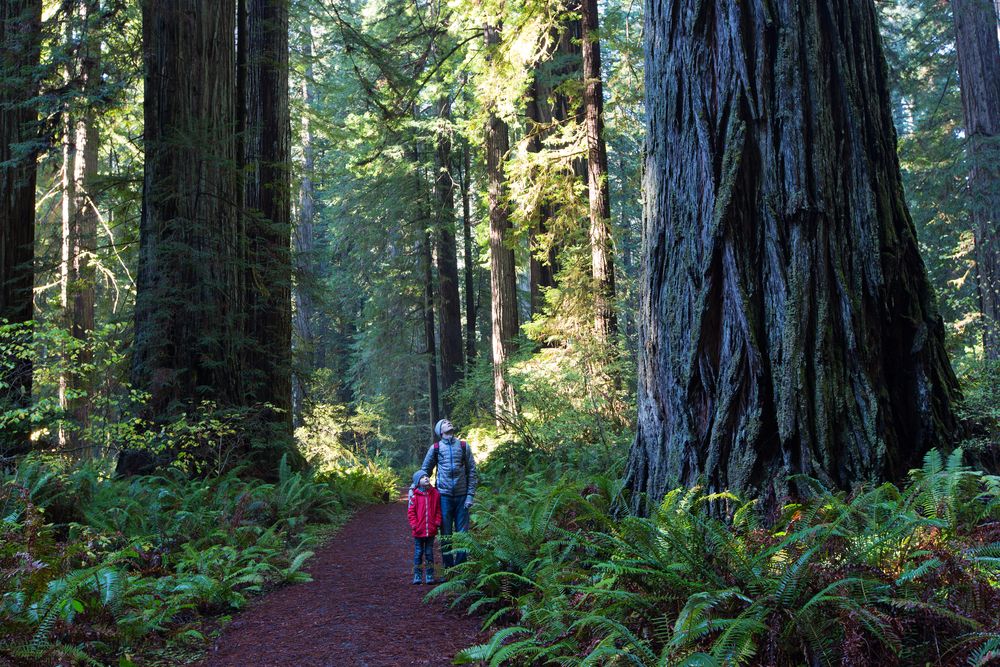
- Trail Mavens offers outdoor adventures for urban women, including bioluminescence kayak camping as well as camping and backpacking excursions to Pinnacles, Yosemite, Big Sur, Trinity Alps, Death Valley, and Lost Coast. If you already have gear, that’s great. Otherwise, Trail Mavens is the perfect introduction to the outdoors. They’ll provide, according to their website, “tents, camp chairs, stoves, fuel, firewood, Pinot Noir, marshmallows, First Aid, etc.”
- Outdoor Adventure Club has been offering exactly what their name promises since 1996. They offer everything from hikes between Tule Elk Preserve and Tomales Point to Rock Climbing Basics clinics at Castle Rock State Park. Don’t forget the surfing lessons, kayaking excursions, and white water rafting opportunities, too. They even have a magical cabin in Lassen Volcanic National Park for skiers to rent out and enjoy.
- Castle Rock Climbing School offers private and group climbing, climbing classes, kids’ camps, and guided trips. Their programing extends beyond the Santa Cruz Mountains, where Castle Rock sits, to include top destinations in the East Bay, Pinnacles National Park, the Eastern Sierras, the Southern Yosemite Range, Inyo National Forest, Joshua Tree National Park, and even Smith Rock in Oregon.
- Backroads Adventure Tours offers several packages in the San Francisco area, including a bike and kayak excursion through the Redwoods that takes you through Humboldt State Park, Redwood National Park, Big Lagoon Wildlife Area, and Eureka. Another expedition takes you into Yosemite by bike through the Mariposa Sequoia Grove and Tuolumne Meadows.
- Green Tortoise is a proven, reliable contender in the San Francisco adventure travel space. They offer one-day trips that include the Redwoods, Russian River, Point Reyes, and Santa Cruz, as well as longer excursions to Yosemite, Mendocino, and even a biodynamic wine ranch.
- Incredible Adventures is a wonderful way to experience San Francisco’s de facto backyards of Yosemite and Tahoe, as well as wine country, Muir Woods, and the south fork of the American River. They have hop-on-hop-off tours in and around San Francisco, as well as group tours further afield, and even private charters.
- Extranomical Tours go to many of the same nearby wonders as other companies, but emphasize that their outings are lead by local experts who are extra in-the-know. You can even look up the biography of the person leading your trip, with fun facts on what they love about San Francisco. California residents can sign up for an exclusive annual pass so you can enjoy tours all year long.
- Marin Outdoor Adventure Company offers surf lessons in private or group settings, as well as adult surf camps and hiking in the Redwoods.
- Source Adventures offers $69 transportation to Squaw Valley skiing.
Outdoorsy Fun to be Found Near Downtown, San Francisco
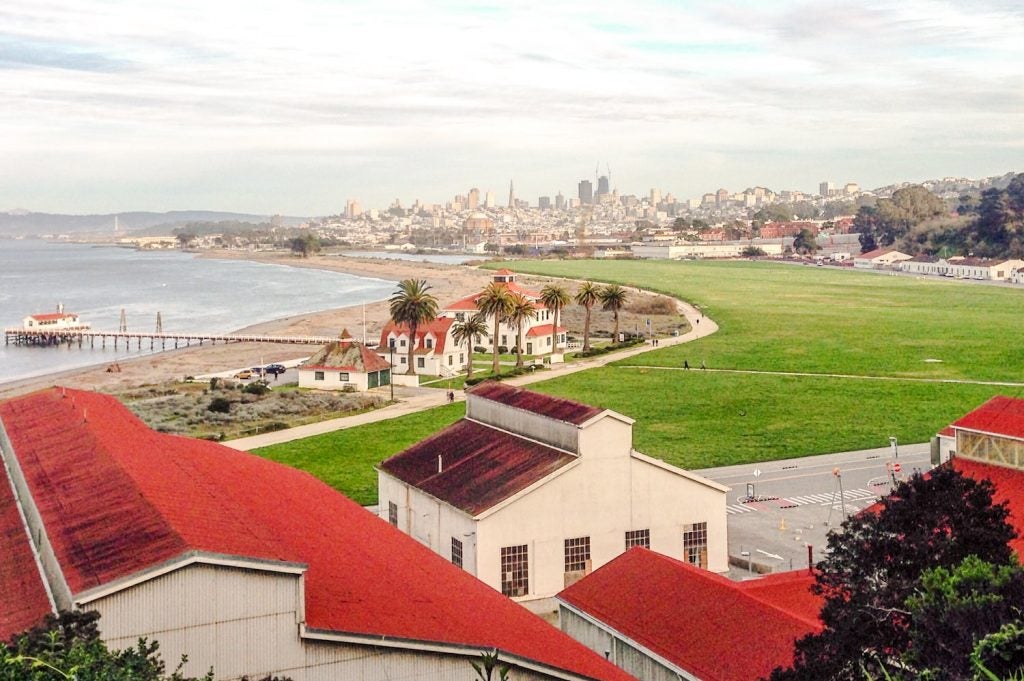
View of San Francisco, CA
There are 14 parks of some official federal or state designation in the Bay Area, and that’s just the beginning. You could spend a whole lifetime just getting to know the ins and outs of curious peninsula where the American West meets the Pacific and one of the great cities of the world meets the great outdoors.
1. Fort Point Historical Site and the Presidio

Photo by The Dyrt camper Michael I.
We tend to think of the Civil War as a conflict that engaged the North and South, not the wild West. Yet Fort Point and the Presidio both had a role to play in both the Civil War and other conflicts. It was only in the mid-1990s that the Presidio was decommissioned as a naval base. Now you’ll see joggers and dog walkers powering past old barracks on their way through the Presidio’s eucalyptus groves. There are 24 miles of hiking trails and eight scenic overlooks in the park, including the end of the 1,200-mile Juan Bautista de Anza National Historic Trail that begins in Nogales, Arizona.
2. Batteries to Bluffs Trail
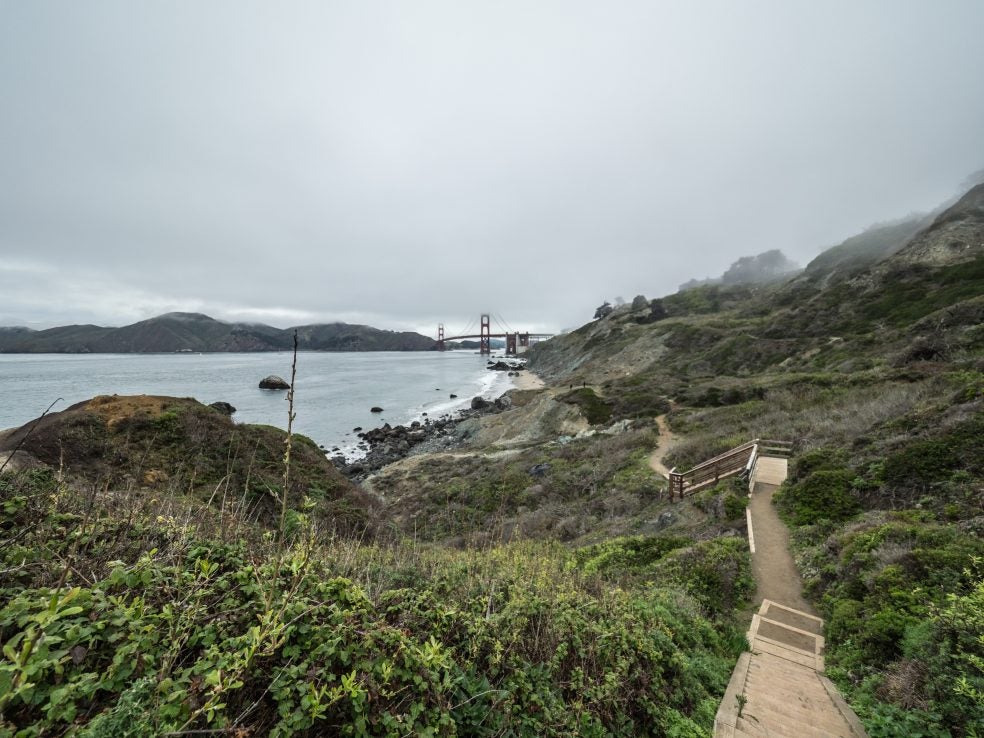
The Batteries to Bluffs trail is another can’t-miss classic, from which you might see dolphins in the bay and you’ll almost certainly catch a good sunset if the fog isn’t too thick. You can also walk through the Presidio on your way to the Golden Gate Bridge. It’s hard to believe, given how accessible the Presidio is, that it’s still very much wild. There’s a significant coyote population there, enough that trails are sometimes closed to dogs to prevent wildlife interactions. Don’t forget to check out Andy Goldsworthy’s Wood Line sculpture as you wander, or to wrap up the day with a refresher from Fort Point Beer Company at the Presidio Social Club.
3. Golden Gate Park

Photo by The Dyrt camper Meghan O.
Yes, it was modeled after Central Park in New York City in 1870, but since then Golden Gate Park has taken on a life and reputation all its own. Today, it’s the third most visited park in the United States. Golden Gate Park’s 1,017 acres are home to, amongst many other things, The deYoung Science Museum, the California Academy of Sciences, the Conservatory of Flowers, and the San Francisco Botanical Garden. At the later, you can see magnificent Redwoods even if you never pop up north to Marin County. The park is 3.5 miles on each side, so there’s no shortage of ground to cover by bike or on foot. You can even squeeze in a game of tennis. If you get tired or lost, there are shuttles to help you find your way.
4. Angel Island State Park
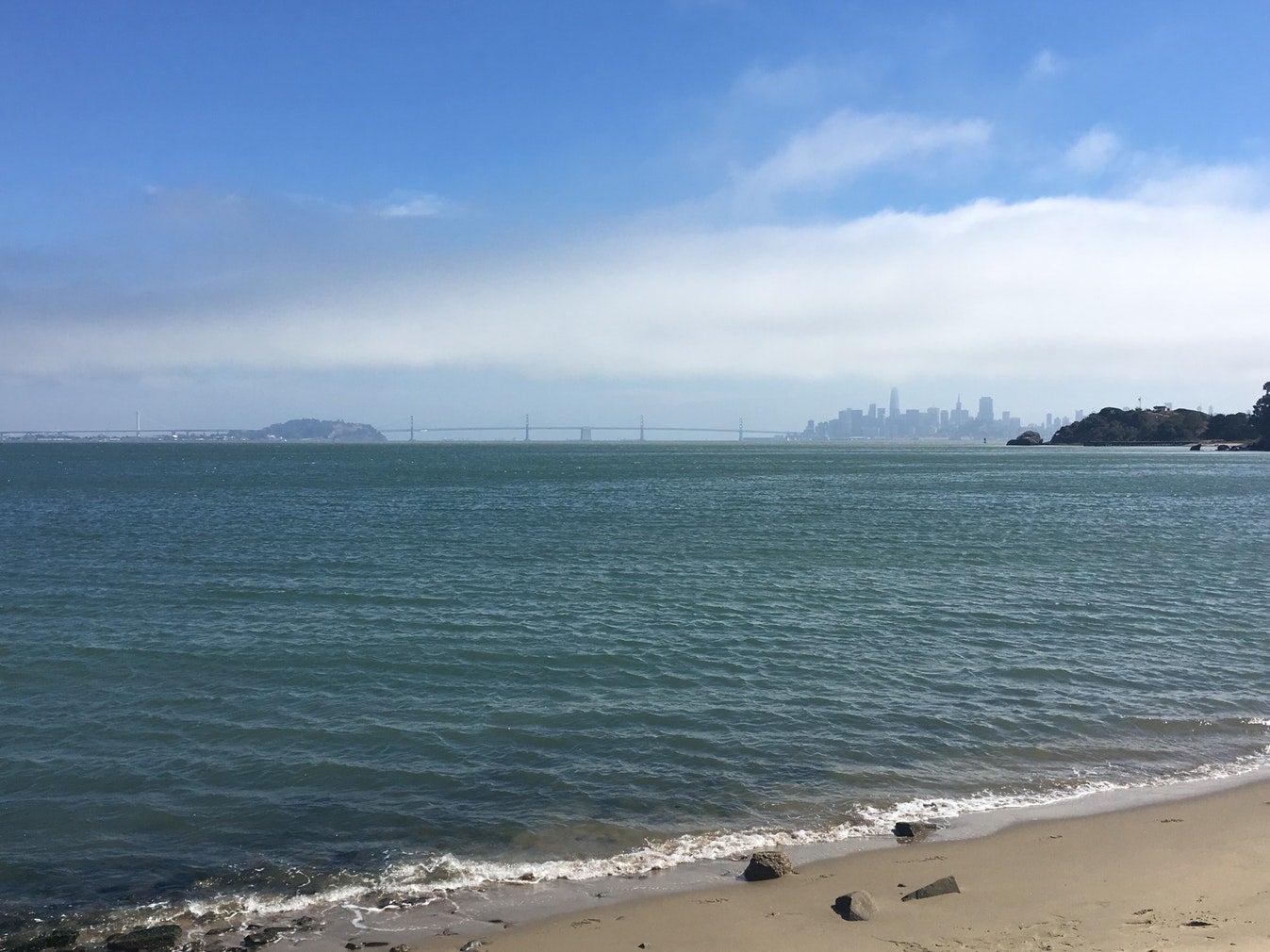
Image by The Dyrt camper Haley C.
Once San Francisco’s answer to Ellis Island, Angel Island was the entry point for millions of Chinese and other immigrants pouring into the city looking for work. Now it’s an outdoor scenery-apolooza reachable by ferry. Like Fort Point, has Civil War history to explore at Camp Reynolds. There are also three beaches with lovely views: Quarry Point, Ayala Cove, and Perle’s Beach. You can rent a bicycle to ride the perimeter of the island and see the Bay from all angles, and grab a snack when you’re through at the concessions stand. The real attraction, though, is the 788-foot-high summit of Mount Caroline Livermore. Hike to the top for a real look at San Francisco.
5. Rope Swing Over the City
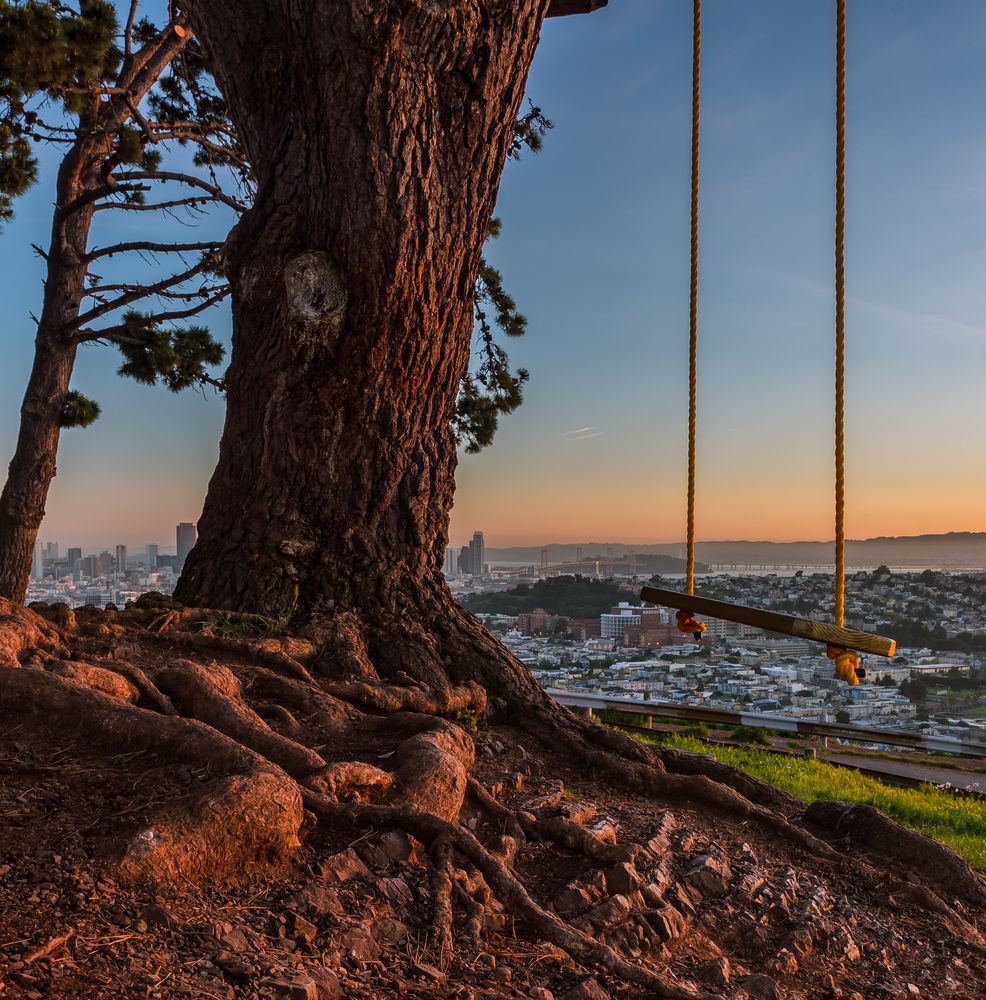
The Billy Goat Hill Rope Swing is one of those sweet local insider spots that social media has exposed to a broader audience. This could good or bad, depending on where you stand in the geotagging debate. It’s easy to reach, located right in the middle of the Castro district, so climb up the hill and see if the swing is there. Sometimes it comes down, but the neighbors always bring it back before it’s been missing too long. There’s also another swing with great views tucked away on a hill in Berkeley — near the university — called The Big C. In fact, there are a few different options beyond these two most popular if you want to make a rope swing tour of the Bay Area.
6. Golden Gate National Recreation Area
No ordinary urban park, the Golden Gate National Recreation Area is a sprawling collection of San Franciscan coastland encompassing — according to the National Park Service — 19 ecosystems and over 2,000 plant and animal species. One of those critters includes your #DyrtDog, as GGNRA prides itself on being the most dog-friendly park in the National Park Sevice. Golden Gate Recreation Area includes beloved spots like Stinson Beach, the Battery East Trail that connects the GGNRA to Fort Point, Gulf of the Farallones National Marine Sanctuary, Crissy Field, Rodeo Lagoon, and Big Lagoon. There are 250 trails that extend from San Francisco to San Mateo to explore outside of the city, too. How many opportunities do you have to hit the trail downtown and walk straight on out into the wild, car-free?
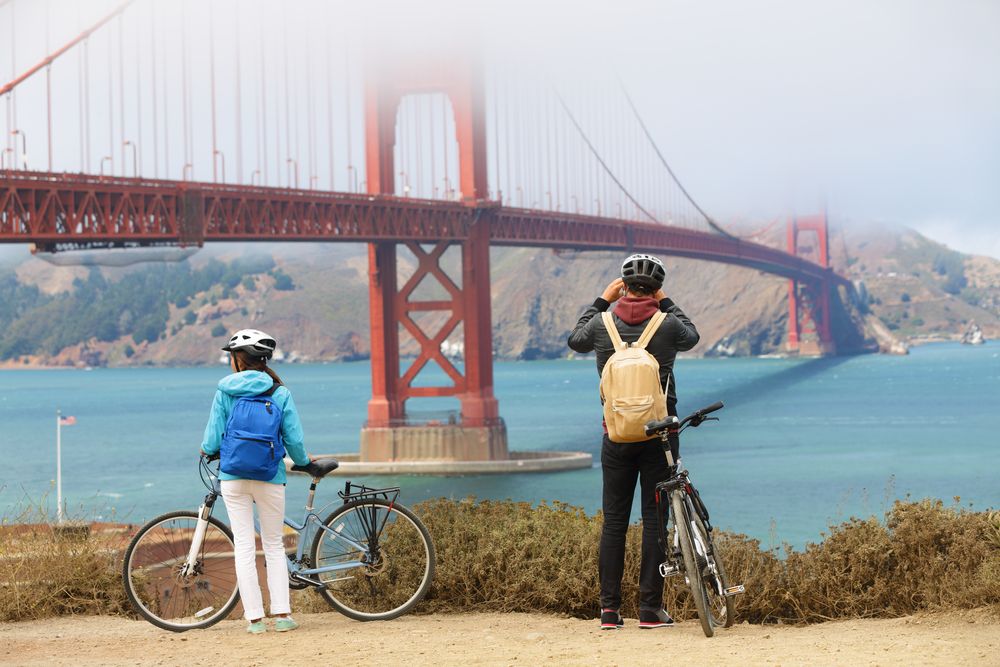
The Marin Headlands are a jock’s delight, resting just across the Golden Gate Bridge from northwestern San Francisco. Explore the area that was once home to the Miwok Tribe, which now features the Point Bonita Lighthouse, various former military installations, and opportunities for birdwatching from Hawk Hill. The Tennessee Valley Trail is prime hiking and biking with coastal views, named for the SS Tennessee mail ship which shipwrecked in 1853. Tennessee Valley is also a popular place to camp in the Marin Headlands.
Back in San Francisco, Ocean Beach is technically part of the GGRA, where experienced surfers can catch the huge, white waves crashing against the edge of Golden Gate Park. Spectators have long enjoyed beach bonfires there, too, though the National Park Service has recently released stricter rules about when you can burn. Fort Funston sits south of Ocean Beach along the Great Highway in the southwest corner of San Francisco’s 47 square miles, not far from where San Francisco turns into Daly City.
There’s a little something for everyone here, from paved, wheelchair-accessible loop trails to a tough hike up and down the eighteen-story bluffs. Hang gliding is popular here, though it’s not best for beginners (ocean breezes are best in March and October). Check in with the Fellow Feathers Gliding Club for more information on how you can take flight. Also taking flight from here is the endangered Bank Swallow. Keep an eye out for these beautiful little birds.
Can’t-Miss San Francisco Area Hiking Trails
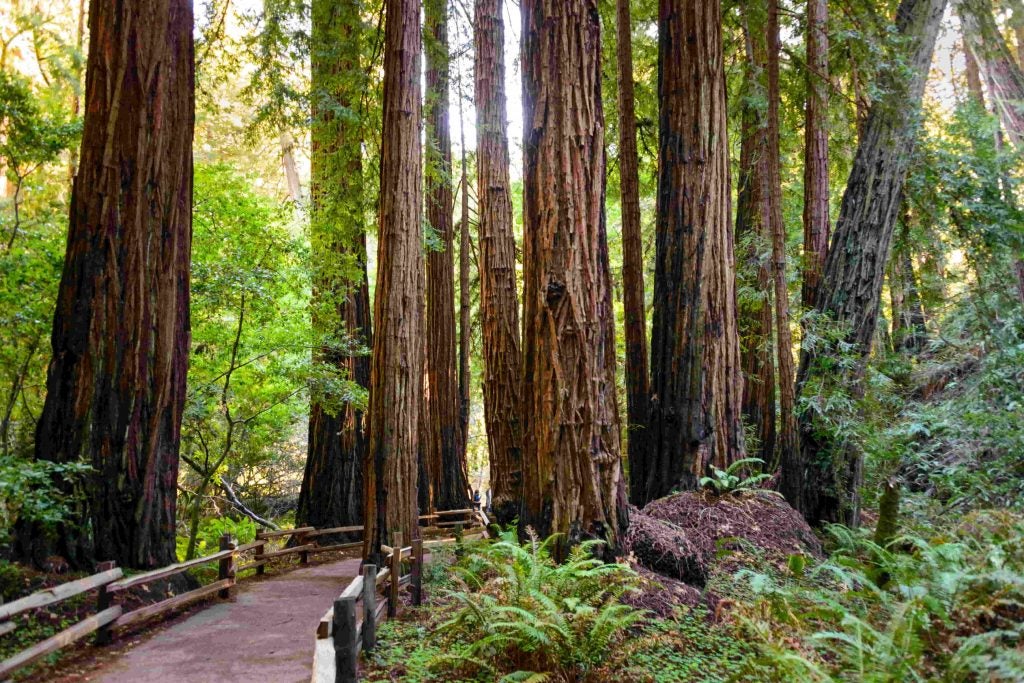
Muir Woods National Monument
1. Muir Woods
Muir Woods was saved from destruction in 1907 by California politician William Kent, who purchased one of the few remaining redwood canyons that hadn’t yet been logged and donated it to the federal government in order to protect it from local eminent domain. It was declared a National Monument in 1908, but rather than taking credit for himself, Kent insisted the park be named for John Muir, who helped found the National Park system in the first place. Today you can enjoy 6 miles of trails, including some that extend into the neighboring Mount Tamalpais State Park. Muir Woods has become so popular that the National Park Service has put together a new parking and shuttle system (connected with Golden Gate National Recreation Area), so study up and make your reservations before you go.
2. The Dipsea Trail
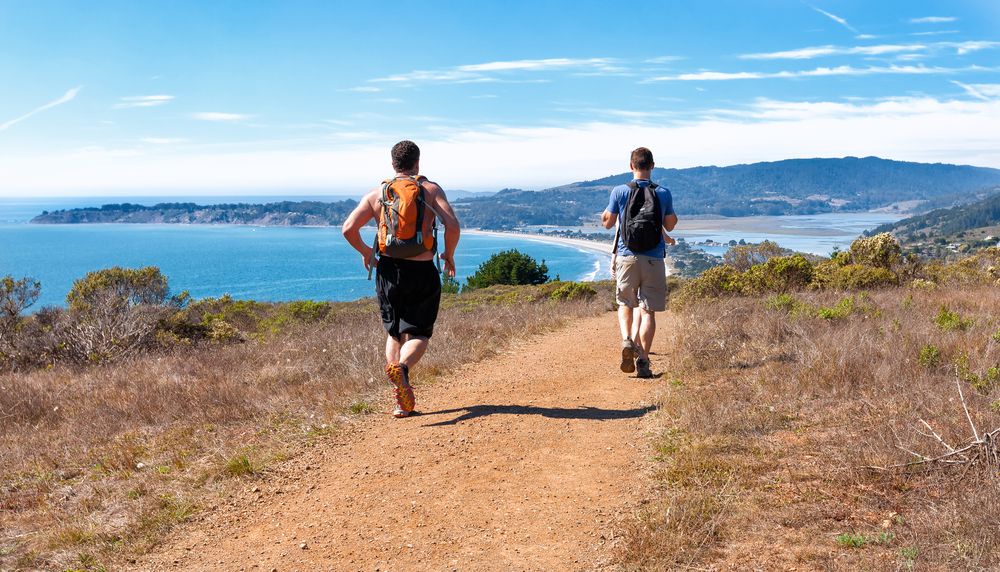
Home to one of the oldest foot races in the United States, The Dipsea Trail is synonymous with the origins of American trail running. It all started with a bet between San Francisco runners at the Olympic Club, and ever since that bet in 1905, runners have been testing themselves against this route, which winds from Muir Woods to Stinson Beach. It starts with an intimidating 688 steps before crossing through the Muir Woods National Monument, Mount Tamalpais State Park, and the Golden Gate National Recreation Area with wild turns and 2,000 feet of elevation gain. The trail has also been home to other competitions, including the 1918 Women’s Dipsea Hike. Today you can hike it any time, no race number needed except in June.
3. Mount Tamalpais
Mount Tamalpais offers delightful views of not just San Francisco, but much of the Bay Area. On clear days you can see as far out as the Faralon Islands — a pair of rocky sea-stack land masses 25 miles out in the Pacific that are inhabited only by birds — as well as the Sierra Nevada Mountains in the far, far distance the other direction. From 2,571 feet up you can also get a great view of San Francisco, the East Bay, and Mount Diablo 65 miles east. This spot is great for 60 miles of hiking and camping, and it’s also got the 0.75-mile-long wheelchair-accessible Verna Dunshee Trail, which boasts 360 degree views, for those exploring the outdoors with disabilities. One of Mount Tamalpais’s biggest claims to fame, however, isn’t the hiking or vistas within an hour’s drive of San Francisco, but the mountain biking. After all, Mount Tam, as it’s affectionately known, was the place where mountain biking was first invented. As you cruise the Coast View and Dias Ridge multi-use trails, just think back to the first mountain bikers bombing along on heavy steel-frames welded together in some garage.
4. Point Reyes National Seashore
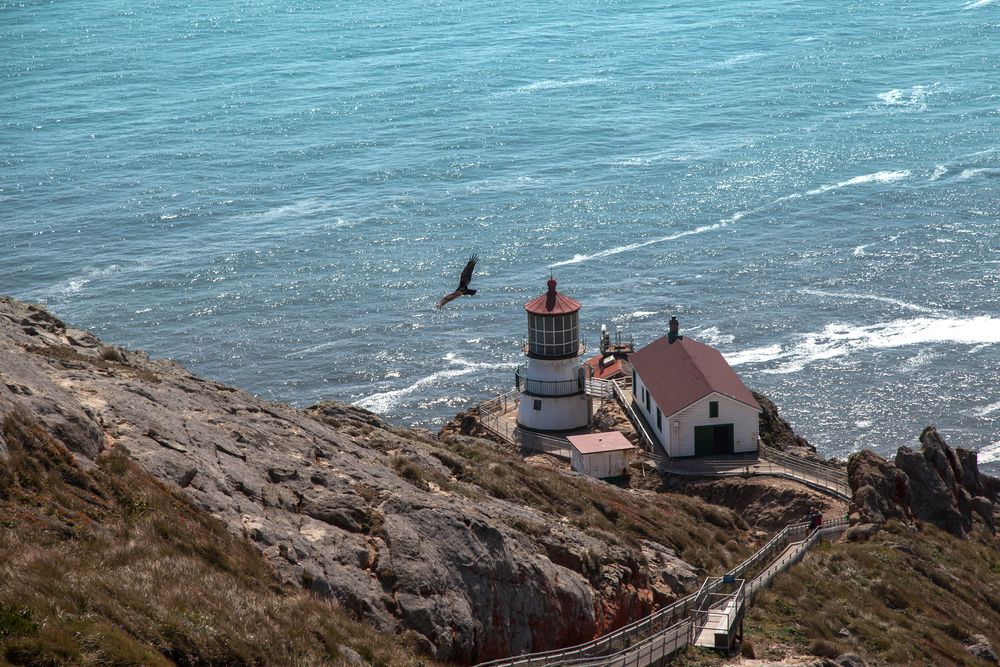
Point Reyes National Seashore plays host to a wealth of outdoor activities set against the backdrop of the grassy, rolling headlands of NorCal curving around the vast arc of the Pacific. There is boat-in camping, kayaking, horse trails, and backcountry camping in addition to day hikes.
Wildlife lovers and bird watchers will enjoy glimpses of the snowy plovers that live in these parts along with 1500 species of plants and animals. Camp at the Phillip Burton Wilderness and Tomales Bay, but make a reservation far in advance. Understandably, there’s a lot of interest in this much beauty an hour from San Francisco.
Hikes at Point Reyes take you into the San Andreas Fault zone, through a replica Miwok village, past sea lions near the Limantour Estero mud flaps, and enjoy the sound of the waves from McClures Beach Trail. Chimney Rock is another popular destination within Point Reyes that has excellent views. Don’t forget to check out Alameres Falls — it’s an almost 40-foot tidefall in which fresh water pours directly into the ocean.
5. Skyline-to-the-Sea Trail
The picturesquely-named Skyline-to-the-Sea trail descends from the Santa Cruz mountains down to Waddell Beach, passing through both Castle Rock State Park and Big Basin Redwoods State Park over its 30-mile course. It’s reasonable to hike the Skyline-to-the-Sea in three days, making for a fantastic weekend excursion. Just don’t forget to book your campgrounds in advance, as you’ll be heading through some popular parks (and banana slug habitats).
6. Orr Hot Springs

Slightly north of Harbin, nestled in the mossy, fern-filled Mendocino Coastal Range, Orr Hot Springs sits two hours from San Francisco tucked into a canyon behind Boggs Mountain. Once prized by the Pomo Native Americans and their neighbors, Orr has been used as a leisure spa by white settlers ever since a stage coach route ran through the area in the 1800s.
It’s still going strong today as a clothing-optional resort with several soaking pools of different temperatures, star-gazing tubs, massages, yurts, and other overnight accommodations. When you aren’t relaxing in the steamy mineral springs, stroll through the nearby Montgomery Woods, a 3-mile stand of virgin redwoods towering over Mendocino County.
7. Mount Diablo
The peak of Mount Diablo sits 3,849 feet high and about 30 miles due east of the Bay in Contra Costa County. Around half the mountain is preserved as a state park full of hiking, biking and equestrian trails trails, as well as campgrounds. The other half is the target of the Save Mount Diablo campaign, a movement actively working to raise money and awareness around protecting the other half of the peak. To that end, there are events including the Diablo Trails Challenge (a series of running races of different lengths), an annual Four Days Diablo camping trip (described as “gently roughing it” with long hikes that end in chef-prepared meals in the field), a Moonlight Gala fundraiser, and the Mount Diablo Challenge (an all-ages bike ride to the summit). In addition to those official events, there are a variety of hikes you can tackle on your own, including the 30-mile Diablo Trail and the 60-mile Diablo Grand Loop.
8. South Yuba River State Park
Covered bridges and canyons define South Yuba River State Park, this picturesque park in former gold rush country just outside Tahoe National Forest. Further north, the Yuba is known for killer rafting near Nevada City. Down here though, the white water has died down. The Buttermilk Bend Trail is ideal for wildflower watchers and is an easy enough grade that wheelchair users can navigate it. Another great option for disabled outdoors enthusiasts is the Independence Trail, which is the nation´s first wheelchair-accessible wilderness trail. Cemetery Loop takes you past the old Kneebone family plot. If you visit in October, you might be able to catch the “Ghosts of Bridgeport” pageant that describes the history of the Kneebone family and their importance in the area. The real high point of South Yuba, however, is where its many hiking trails will take you — straight to secret swimming holes and beaches that will cool you off all summer long.
Get Caught in the San Fransisco Surf

1. Bolinas
Much of San Francisco’s coastline makes for challenging surfing, presenting cold waters, hard waves, and big rips that can be tough to navigate. Bolinas is the exception, however, and offers waves manageable even for beginners thanks to a protective lagoon just north of Stinson Beach. In fact, the waves can be so mellow you might want to bring your long board.
2. Ocean Beach

Way out past Sunset Beach, Ocean Beach offers tough waves but an easily accessible beach. The rips can get scary here, so it’s advisable to head out only if you’re a very strong swimmer who knows what to do when caught in a tide. If you have the chops though, the waves are great and consistent. If you prefer to act as a spectator, there are plenty of places to sit and watch, play with your dog, or even cozy up inside the Beach Chalet Brewery and keep an eye on things from above.
3. Linda Mar Beach
Less aggressive than Ocean Beach, Linda Mar Beach has plenty of parking, and spots that will suit almost any experience level. You won’t find as many territorial locals as you might at ultra-challenging, scenic spots like Fort Point. There are bathrooms and showers, too, so if you want to pop out for a lunch-time surf session you can clean up afterwards.
4. Montara
Montara is famous for two things: surfing, and nude beach goers. The swells are great and not too much for an intermediate surfer, and nearby Pacifica has good breaks as well. You should find that Montara never gets too crowded or foggy and that the surf is good and tall. If you can stand a hard paddle out (which is pretty standard anywhere you go in San Francisco), you’ll be well rewarded.
Bay Area Climbing Spots You Will Love

woman pretends to dangle from rocky hill with san francisco houses in the background
1. Beaver Street Wall
Beaver Street Wall lies in the heart of the Castro district, so if you’re used to driving an hour or so to get to the crag, it’s amazing how this remnant of San Francisco’s seismic history is as accessible as a 7-11. This 5.9 or 5.10 top-rope climb makes for a fun, glassy vibes as you make your way up radiolarian chert cracks.
2. Glen Canyon Park
Glen Canyon Park has been local favorite for outdoor bouldering for years, but now a public indoor rock climbing wall has been added in the rec center. It’s hard to believe you’re minutes away from Noe Valley, the Castro, and Bernal Heights when you’re clambering up Choss Buttress or top roping Black Overhang. That is, until you grab a drink afterwards at one of San Francisco’s remaining cash-only corner pubs, which shares a name with the Glen Park BART station that’s just ten minutes from the crag.
3. Castle Rock
Castle Rock is a site so synonymous with Bay Area climbing that it’s now home to a climbing school. You don’t have to take a class or find a guide to enjoy the projects that make Castle Rock such a dreamy destination, though. There’s bouldering, top rope, and plenty of traditional opportunities. Goat Rock is a nice step for beginners or as a warmup. From there you can try everything from V1 to V4 bouldering problems to 5.11d sport routes like Donkey Dong. Best to reserve a campground far in advance, however, and get an early start. Parking can be competitive and spendy, being such a short drive from San Francisco.
4. Mount Tamalpais
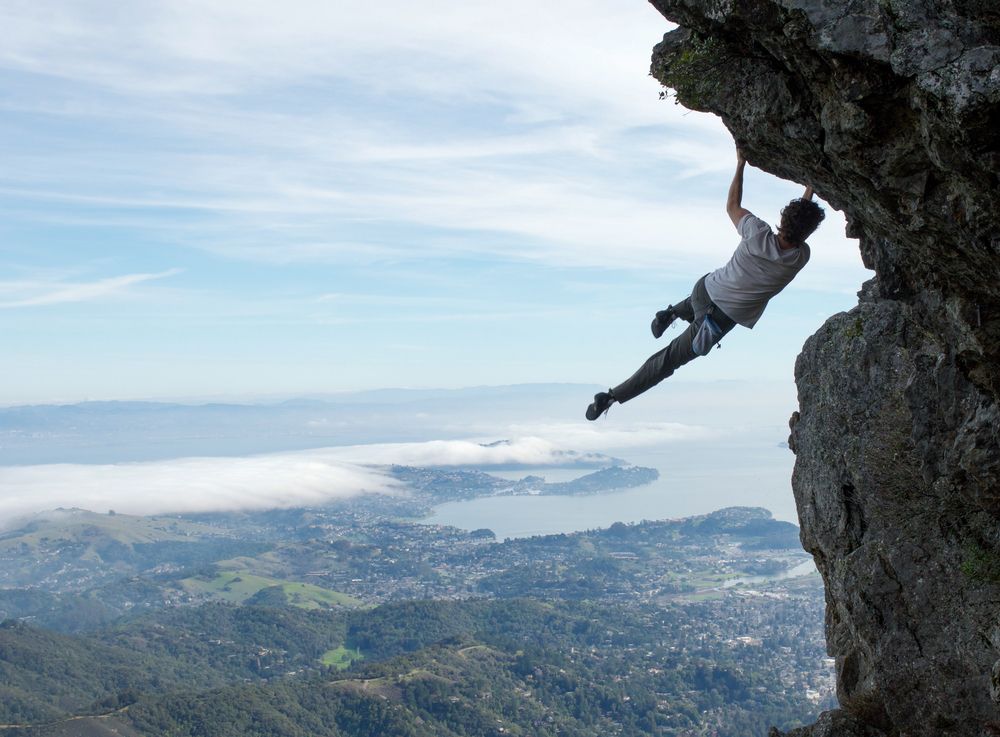
Mount Tamalpais isn’t just good for hiking and biking. Tough overhang routes like Oberman’s Rock reward climbers with 270-degree views of the Bay Area. For a quick start, try Northern Formation, a big slab that will please traditional or top rope climbers. The mineral-heavy serpentine rock is different from the honeycombs at Castle Rock, but provide a variety of difference surfaces including cracks. There’s plenty of bouldering, too, if crash pads are more your style. Best of all, the climate at Mount Tam means you can climb here year-round for the most part.
5. Mickey’s Beach
A mile past the end of the Dipsea Trail, climbers can take advantage of proximity to the coast to try climbing with an ocean view — or more, depending on the tide. If you like it technical and gritty, Mickey’s Beach is a great place to challenge yourself.
6. Ring Mountain
Just twenty minutes outside San Francisco, Ring Mountain is perfect for when you don’t want to waste any time getting to the crag. Tackle highball slab faces with a top rope or, if you’re more daring, as a free solo bouldering project. Turtle Rock and Split Rock aren’t terribly tricky, but it’s hard to beat the accessibility when you just need to be outside quick.
7. Pinnacles National Park
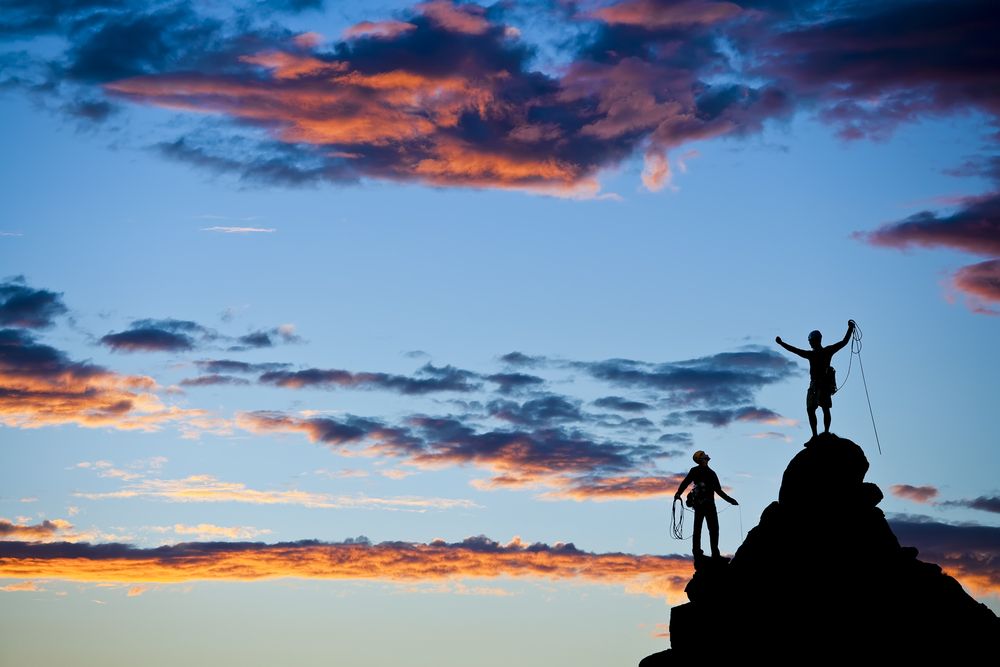
Pinnacles National Park has routes for all skill levels, but it’s the type of rock itself that gives climbing here an extra edge. The volcanic breccia is somewhat fragile, and requires extra caution as you choose your hand and foot placements. That said, because there are so many beginner and intermediate routes here (especially on Discovery Wall), this is a good chance to get a feel for what outdoor climbing is like and how the experience differs from that at your gym. Be prepared to lead on many routes, and heed the National Park Service’s note that the first ascent ethic at Pinnacles is “ground up.”
8. Yosemite National Park
Yosemite National Park climbing could be a whole article on its on. After all, American rock climbing culture was essentially born in the shadow of El Capitan. That said, the domes of Tuolumne Meadows are a five-hour drive from San Francisco. Throw your ropes and aids in the car and get moving!
See New Sights from These Popular Biking Trails
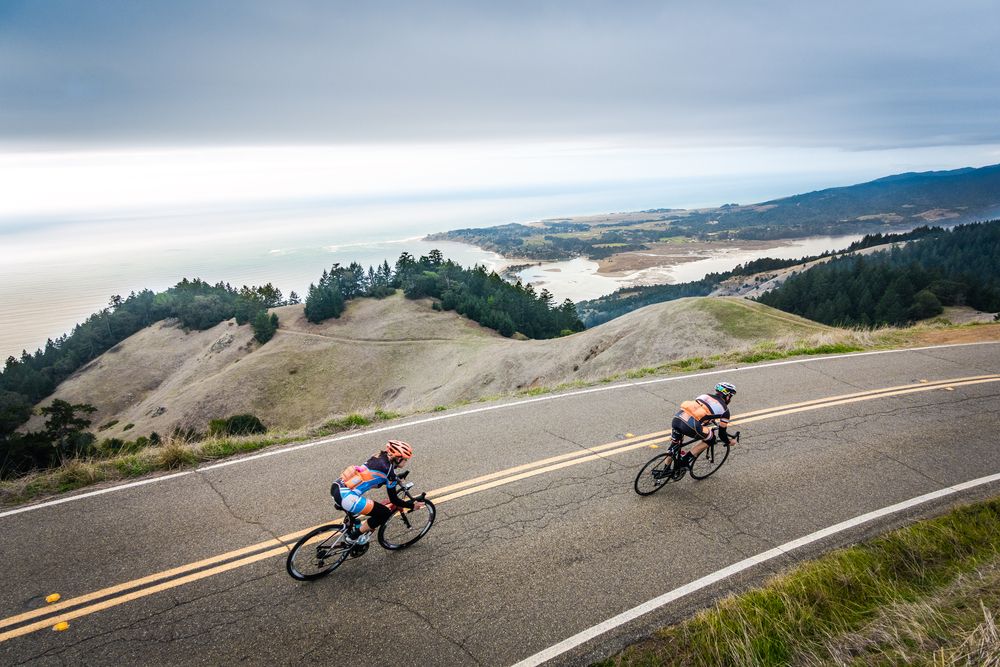
1. Camp Tamarancho
Camp Tamarancho is distinct in that it’s technically owned by the Boy Scouts of America, though they will sell you a permit for cheap so you can bomb along some of the very best mountain biking that Marin has to offer. Look forward to switchbacks, technical terrain, and steep grades that occasionally intersect with fire roads. While you’re in the area, don’t miss the Marin Museum of Bicycling. You can learn more about how mountain bikes were born right here in the Bay Area.
2. Bay Ridge Trail
This hike has been in the works since 1989, when William Penn Mott, Jr. had the bright idea to connect the Bay Area’s many ridges into one big, continuous trail. Today the Bay Ridge Trail comprises 375 miles of the 550 miles Mott originally envisioned. The Western Ridge section is an 80-mile stretch from northern Marin to Highway 92. The Eastern Ridge portion connects 43-miles from El Sobrante to Union City. About 80% of the Ridge Trail is open to mountain bikes. Lower Oathill Mine Road in Napa offers advanced, technical terrain amidst former mercury mines. The John Nicholas Trail and Lake Chabot are both 8-mile sections with views of South Bay and Lake Chabot, respectively.
3. Crockett Hills
This dedicated mountain biking park with views of the Carquinez Strait will appeal to mileage hounds who don’t want to get too technical as you cruise along the Marin sections, including the stunning 11-mile Bolinas Ridge. The Bay Ridge Trail also runs through Annadel State Park, which features 40 miles of trails that take you through Sonoma County grasslands as they transition into oak groves. In the spring, the area is carpeted in wildflowers. You can train throughout the year for the annual Annadel Classic bike race, or take a more mellow approach and use your bike to access to great bass fishing at Lake Ilsanjo. Just don’t forget plenty of water — you’ll want to bring your own. No matter which section you pick, it’s hard to beat this incredible resource for Bay Area mountain biking.
4. Sierra Vista Open Space Preserve
The Sierra Vista Open Space Preserve is a host of hiking and mountain biking trails just an hour and half outside San Francisco near San Jose. Keep it simple on all-levels trails like the easy Aquila Loop, which will take you through the lush East Bay grasslands. If you’re looking for a challenge, push yourself on the punishing 4 miles that make up Arrowhead Full Loop. You might be rewarded with a golden eagle sighting! The sunsets here can be lovely, and it’s easy to tailor your trails to your skill. Just watch out for horses who might be sharing some of the paths — this park is equine-friendly.
5. Purisima Creek Redwoods Preserve
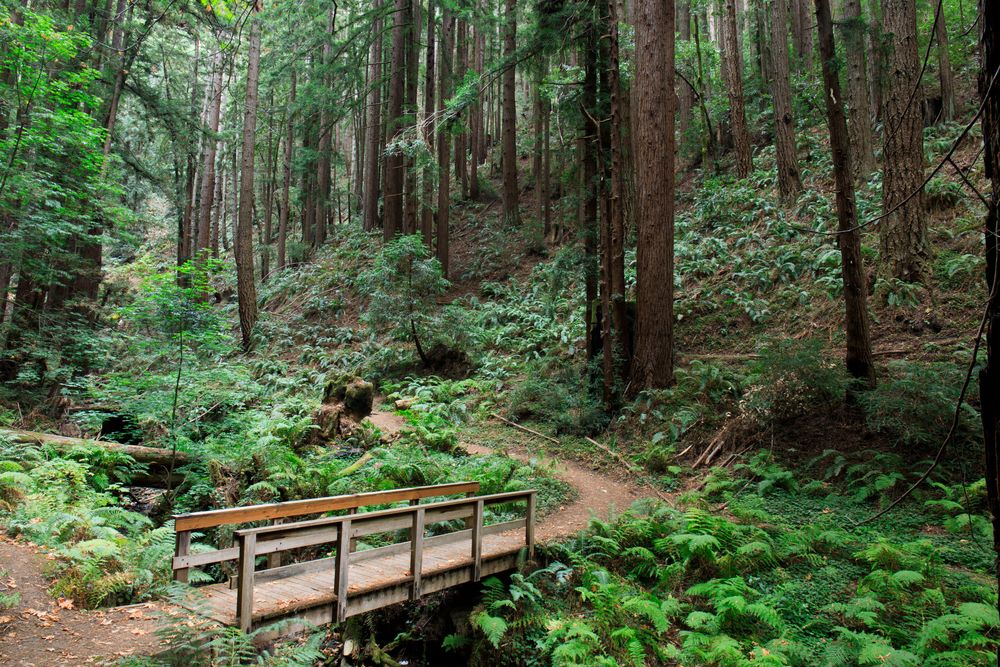
If you like a mix of inclines and descents without getting too technical, and want to swoop in between enormous redwoods that existed long before mountain bikes were invented, the trails in the Purisima Creek Redwoods Preserve will be just right for you. You’ll be sharing the double track with hikers, but the ocean views make up for the adjustment. Many of the trails here wind up in or near Half Moon Bay, where the Santa Cruz Mountains slope into the Pacific.
6. China Camp
Founded as a shrimp-fishing village, China Camp was populated mostly, as the name would suggest, by Chinese immigrants. These days, it’s a great place to get started with mountain biking, even if you’re still a little nervous about staying on the correct side of your handle bars. The trail sections tend to be short and shady, surrounded by oak and laurel trees. The Shoreline Trail is 10 miles out and back with a few switchbacks and a little bit of elevation gain as you build confidence. On your way back into San Francisco, stop at the Marin Brewing Company — you can tell from the mountain bikes hanging from the ceiling that they won’t mind if you come in a little sweaty for a pint.
7. El Corte de Madera Creek Open Space Preserve
For decades, El Corte de Madera was best known for a tragic DC-6 airplane crash in the fall of 1953. Now there’s a mountain bike trail memorializing the lives lost, called the Resolution Trail. You might see pieces of plane still in the woods, but stay on your bike and don’t bother the wreckage. Leave No Trace applies to plane crash sites, too. On a less tragic note, the site’s Manzanita Trail is a study in contrasts. On one hand, it starts out downhill. On the other hand, you’ll run into all kinds of obstacles and technical terrain that make that downhill exciting. Stay sharp and remember the tricky sections — you’ll encounter them again, on the uphill second half.
8. Soquel Demonstration Forest
The Soquel Demonstration Forest is special for all sorts of reasons, not the least of which are that both the San Andreas and Zayante Faults pass through it. Soquel is also one of the only State Forests to sit so close to a major metropolitan area, that it’s run as a demonstration forest by California Fire, and it’s relatively new, founded as recently as 1990.
Over the past 28 years, Soquel has become quite the mountain biking destination. One of the most popular trails is the gnarly Braille Trail, which contrary to its name isn’t one of the actual braille trails designed for the blind to get outside. Instead, it’s nice technical single track that will get your heart rate pumping. Corral is guaranteed to get you some air time, and Saw Pit has lots of ups and downs, both well worth the up-hills preceding them.
9. Annadel State Park
Up in Sonoma County, Annadel State Park features 40 miles of trails that take you through grasslands as they transition into oak groves. In the spring, the area is carpeted in wildflowers. You can train throughout the year for the annual Annadel Classic bike race, or take a more mellow approach and use your bike to access to great bass fishing at Lake Ilsanjo. Just don’t forget plenty of water — you’ll want to bring your own.
10. Angel Island

So Angel Island in the San Francisco Bay is not particularly technical, but that’s ok. The point here is to take in the 360 degree vistas of the Bay and San Francisco on a nice, leisurely ride. If you’re looking to get your adrenaline pumping, this isn’t the spot for you. If you’re a mountain biking beginner who appreciates a good view and trails with history, this is a lovely spot to enjoy a 9-mile ride with mild elevation changes and one-of-a-kind views. There are bike rentals available too, if you are visiting San Francisco without your bike or don’t want to wrangle a bike on the ferry ride over.
11. Shell Ridge Open Space
This Walnut Creek destination is named for the numerous shells found in the area, left over from a time when the Pacific came in this far. Ride Shell Ridge’s 31 miles of trails through rolling hills and functional ranch lands. If you’re really ambitious, you can take the Briones-Mount Diablo Trail to connect to the foothills around the famous eastern peak. You can easily spend an afternoon riding or use this park as the launching point for a larger bikepacking trip.
12. Tassajara Ridge Staging Area
If you don’t mind dodging the occasional cow and you like a little more peace and quiet than you might find on other popular mountain biking trails, Tassajara Ridge Staging Area in San Ramon is the ticket. It’s off the beaten path in a canyon, but it’s not far from Six Pillars Park, which offers a playground and skate area. Before or after your ride, visit the nearby Zealot Cycle Works, a boutique bike shop that also serves beer and wine.
13. Henry W. Coe State Park
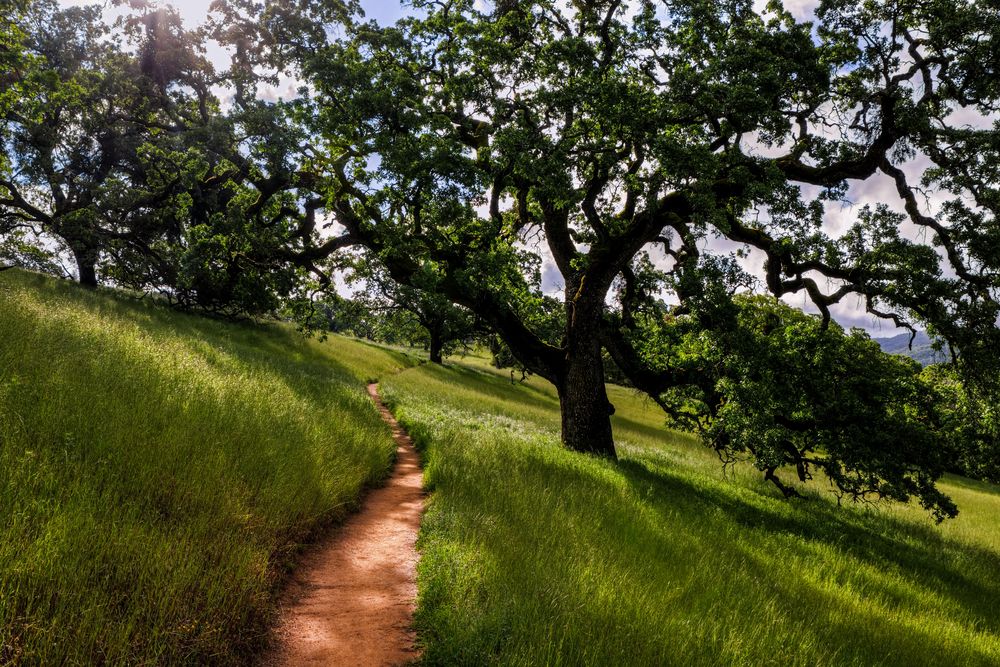
Henry W. Coe State Park is legendary. As (literally) one of the biggest destinations for mountain bikers in California, with 290 miles of trails and roads, this park is known for its intensity. The Frog Lake Trail is suitable for intermediate riders, but most everything else in Henry W. Coe requires advanced skills. The park’s three loops all involve more than 2,000 feet of elevation gain over technical curves, exposed heights, and dirt roads. To really up the miles, bike from park headquarters to Coit Lake for a 27-mile crusher. You can bikepack your way through this former Ohlone Indian territory, as long as you stick to your stove and skip the campfire.
Campgrounds In and Around San Francisco
You’ve hiked, biked, ran, swam and surfed your way around the Bay Area. Find a place to rest at these 10 campgrounds, near all your favorite activities.
1. Angel Island State Park
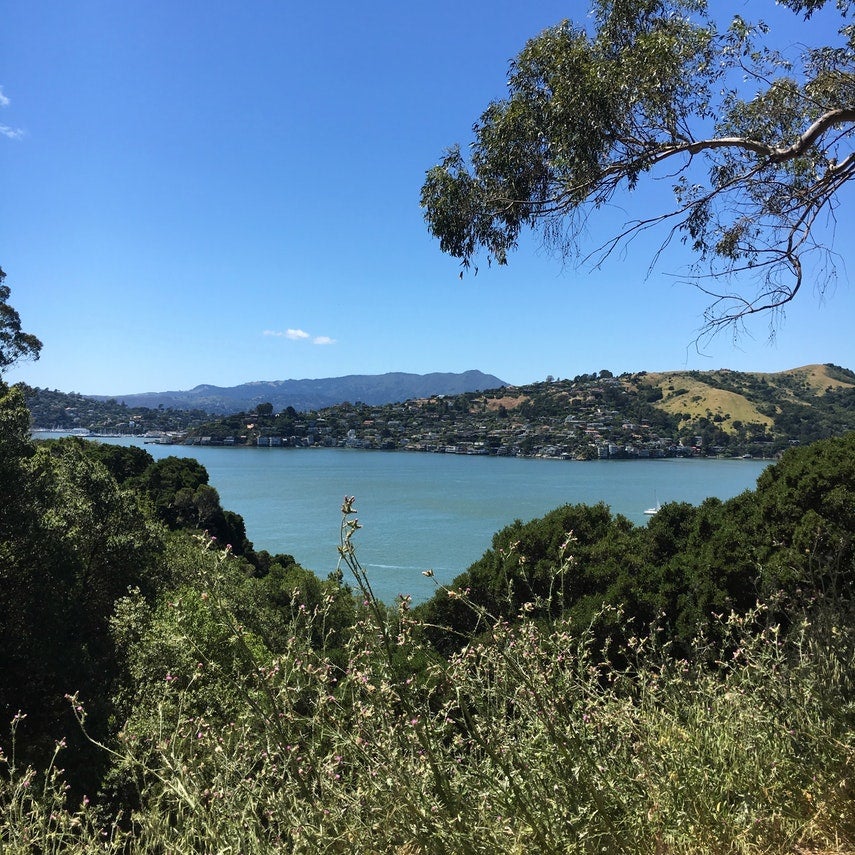
Image from The Dyrt camper Bryan R.
Angel Island has the advantage of being really in San Francisco, just a ferry ride away from Tiburon and downtown. That also means you’ll want to get a permit and be strategic about when you go — this isn’t a spur-of-the-moment kind of San Francisco camping destination despite how close it is to downtown. Once you’re there, however, it’ll be hard to pick which view is your favorite. Everywhere you turn is another amazing angle on the Cool Grey City of Love.
“Try to get a campsite towards east ridge so you can get a view of Alcatraz and both the Bay and Golden Gate Bridge. I would definitely suggest this as a tourist many locals tried to show me the best view of the city (Coit Tower, Golden Gate Bridge and Marin Headlands) but in my opinion the best view is to camp out and see the view at night and in the early morning!” –The Dyrt camper Marion D.
Camp Here2. Kirby Cove Campground
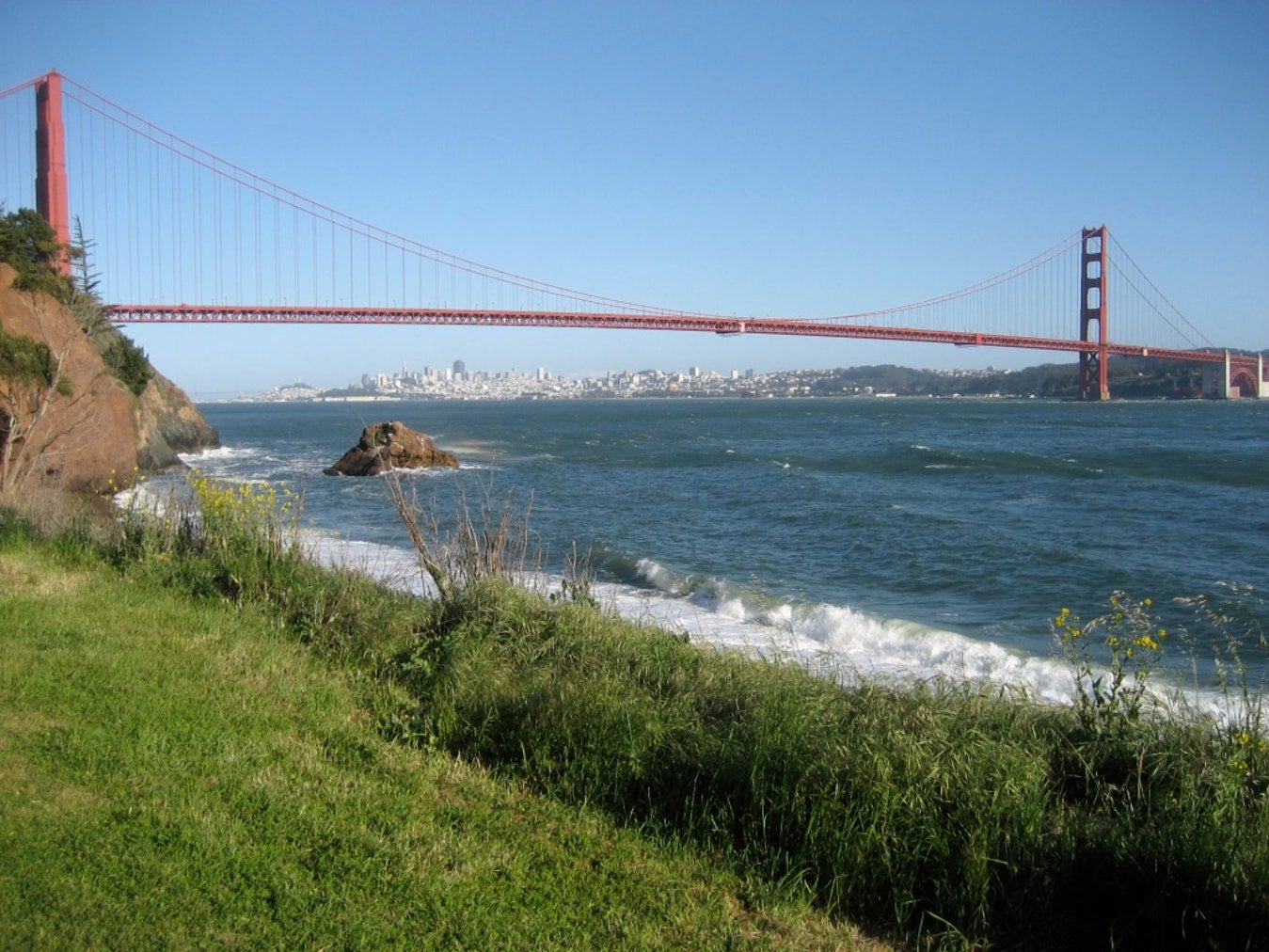
Image from The Dyrt camper Michael I.
Wake up to a sunrise that makes the Golden Gate Bridge glow at Kirby Cove. It’s just opposite Fort Point, and you can see not only the bulk of the city, but also the Presidio from this beach. Despite the urban views, you will have plenty of peace and quiet at Kirby Cove. That’s a pretty nice contrast to, say, the Tenderloin.
“Absolutely beautiful site under a canopy of trees and protected from stiff winds. Three minute walk to the beach with views of the Golden Gate Bridge and San Francisco. You will pass Battery Kirby on the way to the beach. There are only five sites at this campground so you will be secluded. Carry in water and firewood.” –The Dyrt camper Nick M.
Camp Here3. Wildcat Camp
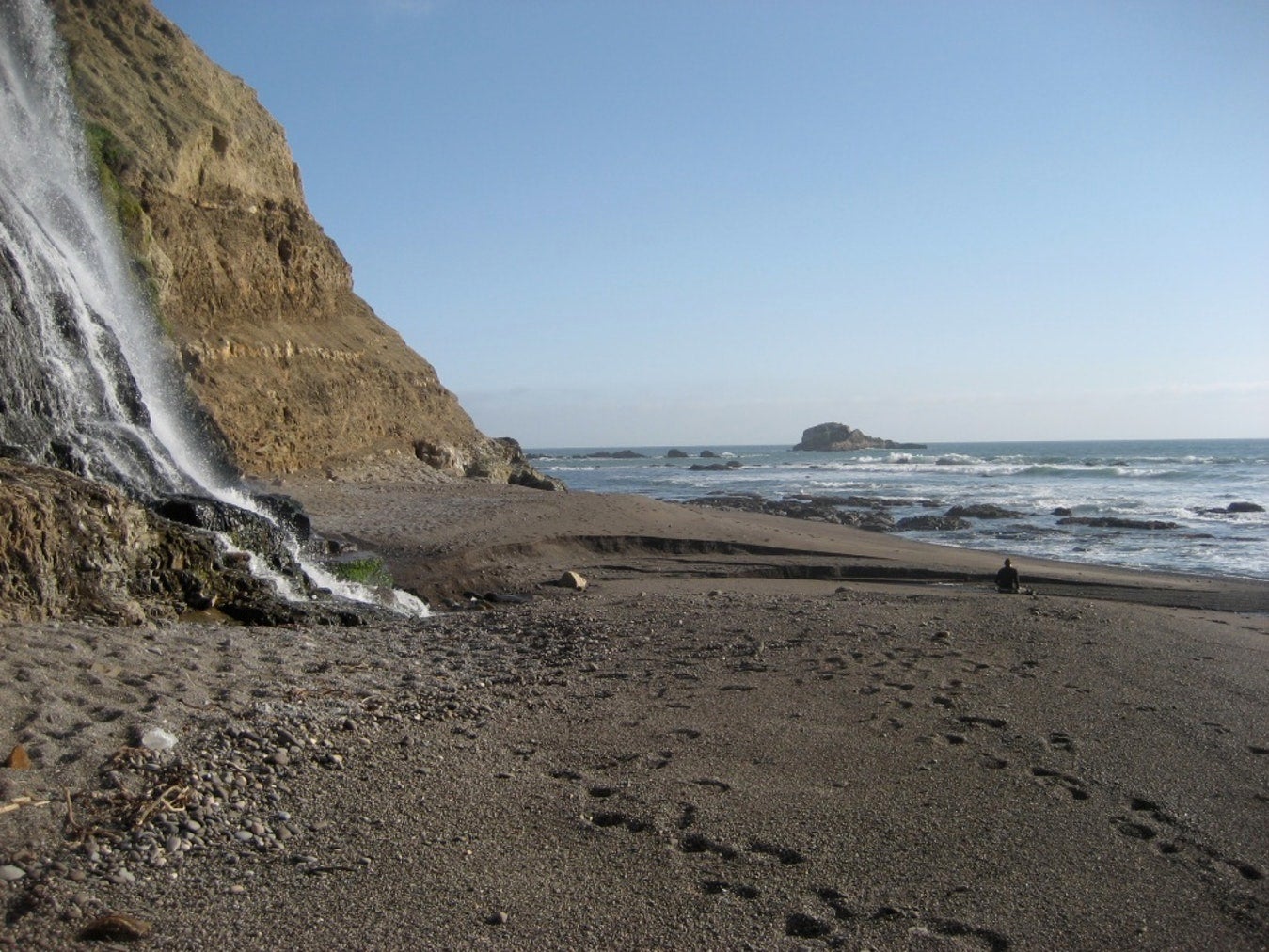
Image from The Dyrt camper Michael I.
Don’t let the name fool you — there are more field mice on this section of the Point Reyes seashore than wildcats. You’ll be in the prime spot for exploring everything that makes Point Reyes a national treasure, including Alamere Falls. Just an hour up the north headlands from SF, Point Reyes is rich in plants, animals, and history. The coastal Miwok people lived here prior to colonization, and this is also where Sir Francis Drake landed during his 1579 expedition.
“The campground itself is set on an open plateau just a dozen or so feet above the beach and there isn’t a lot of cover between campsites. Site 7 is a bit protected by trees and is the closest to the beach so would be my choice in the future. Overall this is a wonderful campground and one I long to go back to every time I think about Point Reyes.” –The Dyrt camper Michael I.
Camp Here4. Steep Ravine Environmental Camp

Image from The Dyrt camper Kelly S.
The lead time on reservations for cabins here at Steep Ravine are just a hint at what a lovely spot it is, adjacent to the Mount Tamalpais watershed and several hiking trails that connect to Marin and Mill Valley. Hike the Matt Davis-Steep Ravine Loop or take your mountain bike up Mount Tam to fly down trails where the sport was first invented. If you can’t tear yourself away from the view, though, we certainly don’t blame you.
“Just a short drive from San Francisco lies Steep Ravine campground at the southern end of Stinson Beach. The campsite sits right on the Pacific Ocean and offers some of the best sunsets imaginable. And being so close to the city, you’d be surprised at how many stars appear at night. The campsites are set up well, you’d never know other people were nearby. The only sounds you hear at night are some frogs chirping and the waves crashing below. The campground also has its own beach to explore.” –The Dyrt camper Dominic P.
Camp Here5. Big Basin Redwoods State Park
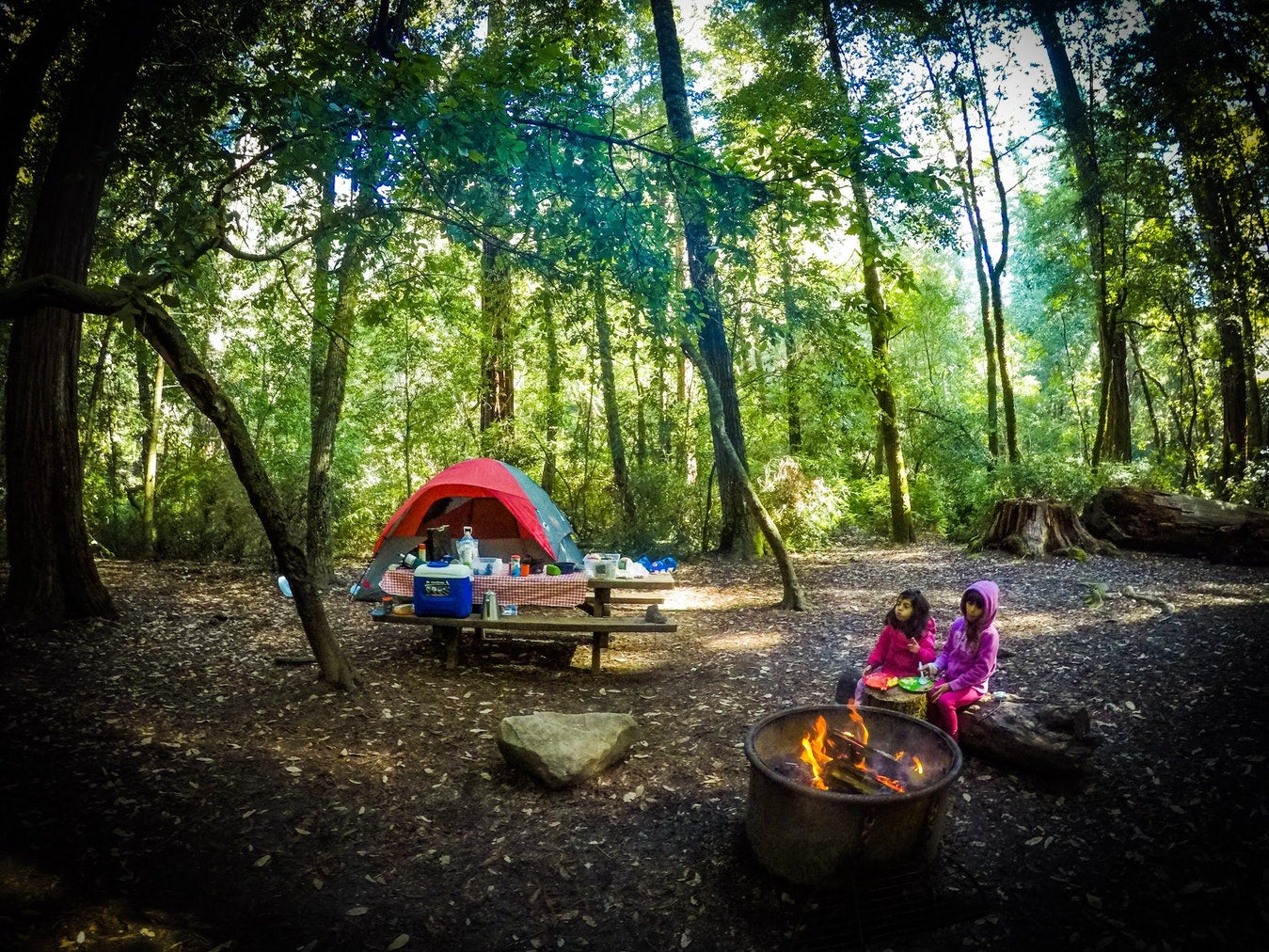
Photo by The Dyrt camper Adventure M.
There’s something for everyone at Big Basin. The kids love splashing in the creek. Hardcore hikers will enjoy heading to the falls or picking up part (or all) of the Skyline-to-the-Sea Trail. Big Basin, like the nearby Samuel P. Taylor park, has some interesting wildlife, too — banana slugs. Everyone can appreciate the aw of camping amidst some of the last and oldest redwoods in the world.
“More than 140 campsites available with flush toilets, water, and large campsites for groups. Rangers drove by each night to keep the larger parties quiet past 10pm. Best thing about this campground is proximity to the Berry Creek Falls… a huge series of water falls on a super long and strenuous hike.” –The Dyrt camper Andrew D.
If you book a cabin, you’ll have a little more between you and the slugs than if you took the tent approach to camping. They’ll keep you cozy year round, giving you all the more time to explore California’s very first State Park, a designation Big Basin has prided itself on since 1902. You can also try to spot which tree Kim Novac hid behind when Alfred Hitchcock filmed a scene in Vertigo here.
“The cabins were nice, and each cabin has 2 double beds, a table, and a wood stove. It can get cold at night in the redwoods so the wood stove was great at night. Each campsite has a fire pit with a grill cover which made it easy to cook dinner. The sites are a decent size with lots of trees to climb on, hide in, and play on. You can get ‘add on’ packages with the cabins, which include things like sheets and pillows for the beds, propane lanterns, and cooking items.” –The Dyrt camper Kim P.
Camp Here6. Skyline Wilderness County Park
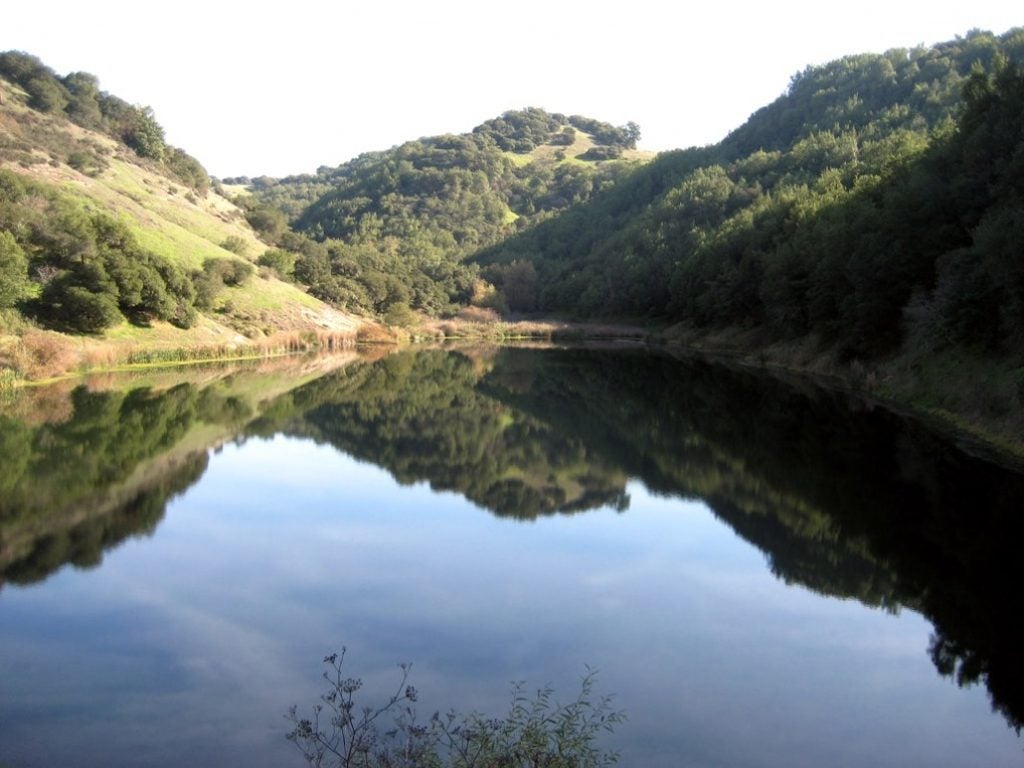
Image from The Dyrt camper Michael I.
There’s a lot to do in the woods just outside Napa. As camper reviews on The Dyrt point out, this is the perfect home base for RV and tent campers to do the wine country thing. Of course, if wine tasting isn’t your thing, there’s always the rad frisbee golf course. Hikers and mountain bikers flock to the area for the Lake Marie Trail, Fire Road, the River to Ridge Trail, and Manzanita Trail.
“A ton of great hiking and horseback riding trails. Literally 5 mins outside of the town of Napa. Sites backs up to Wilderness and saw a doe within 10 mins of setting up camp just a few steps away. Level sites, water, picnic table and grill at each spot. All close to restrooms and showers, needs some updating but very clean. All-in-all, felt like going to summer camp in the city but left with a smile on my face!! :)” –The Dyrt camper Leanne R.
Camp Here7. Bothe Napa Valley State Park
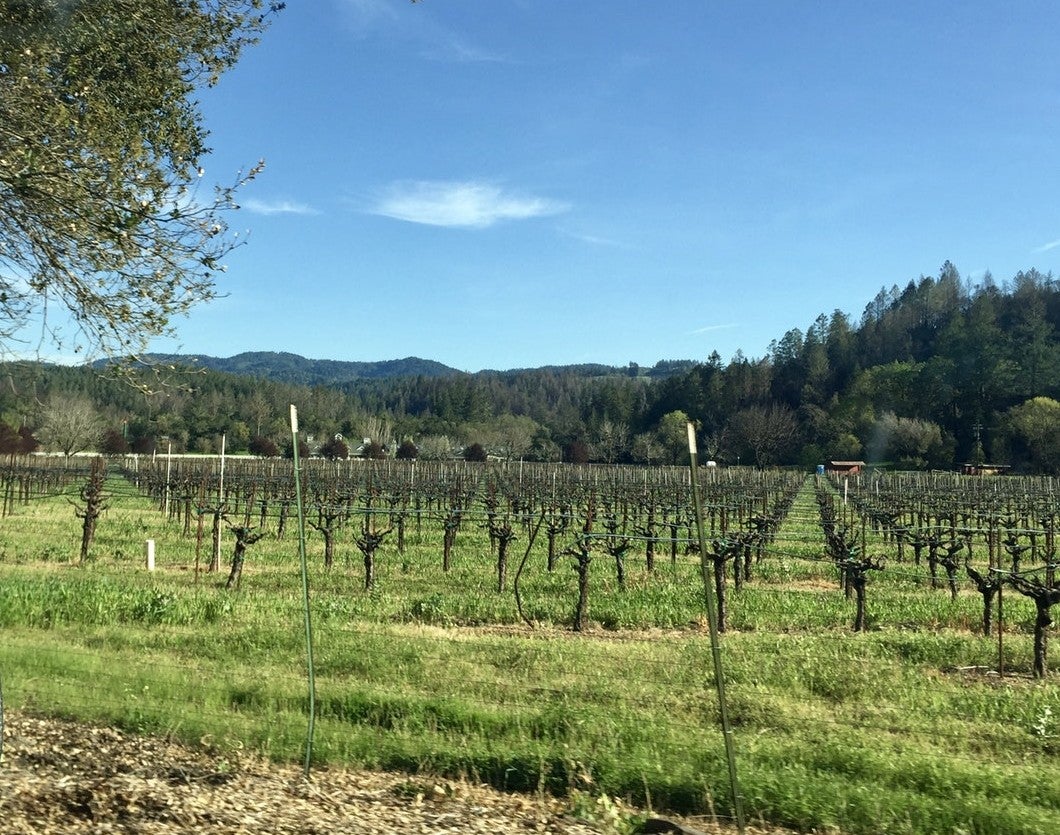
Image by The Dyrt camper Laura C.
Another wine country option is Napa Valley State Park, which The Dyrt camper Susan H. calls the “best secret in Napa.” She writes, “we have rented at this campground many times. Never had any trouble getting a reservation in spring or fall. Camping here leaves lots of money for food and wine splurges!” Amen. The Dyrt camper Kate L. adds, “Traditional campground, yurts and a seasonal pool make this a fun place to go with the kids. Camp sites are on the smaller side. Take a walk to check out the Pioneer Cemetery and nearby mill. St. Clement Vineyards is a fun stop on the way out of town and is kid-friendly.”
Camp Here8. Pinnacles Campground
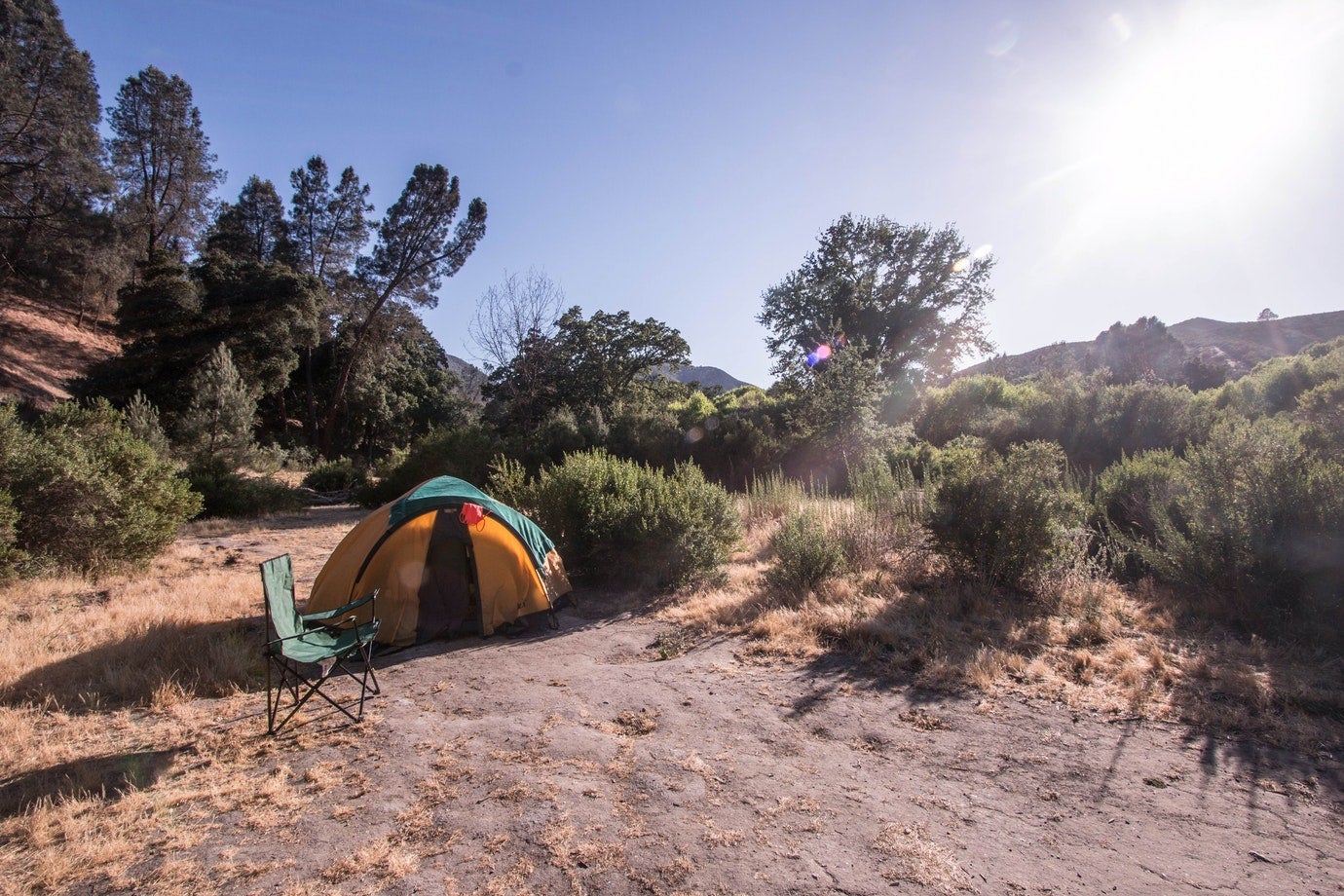
Image from The Dyrt camper Sasha N.
There’s a lot to love about Pinnacles, which boasts tent and RV sites (as well as some hammock-ready spots), a big ranger station, WiFi, and a pool. The best features though aren’t the amenities themselves, but the park itself, where there is a lot to engage visitors of all ages.
Indeed, Pinnacles is one of only two places in California where you can see the rare condors. There is also a shuttle system to help you get around the park. That said, bring extra blankets for night time and be prepared to be underwhelmed by the bathrooms, according to several campers on The Dyrt.
“Here are great trails you can hike to or take a quick drive to from the campground. The CAVES!!!! So cool! And you have to hike the Balconies. Take at least two sources of light (cell phones do not count) and plenty of water as it gets hot in the afternoon. The coolest part was seeing 5 of the 30 or so California Condors soaring on the thermals over me on the Bear Gulch Loop.” –The Dyrt camper Annie C.
Camp Here9. Pfeiffer Big Sur State Park Campground
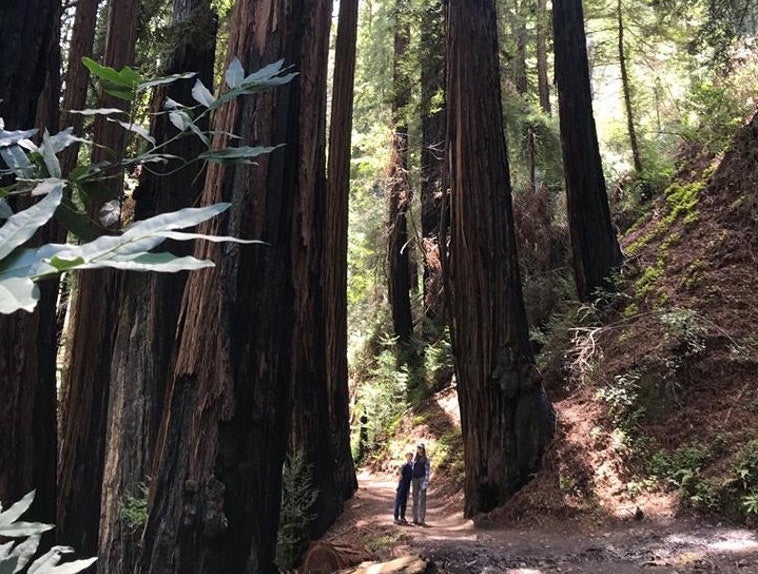
Photo by The Dyrt camper Clark B.
As Henry Miller wrote of this corner of the world in Big Sur and the Oranges of Hieronymus Bosch, “The place itself is so overwhelmingly bigger, greater, than anyone could hope to make it that it engenders a humility and reverence not frequently met with in Americans. There is nothing to improve on in the surroundings, the tendency is to set about improving oneself.”
The furthest afield on this list, Pfeiffer Big Sur State Park is as close to Paso Robles and San Luis Obispo as it is to San Francisco. That said, it’s a real gem just three hours from San Francisco where you can camp amongst massive redwoods, splash in swimming holes and creeks, and get lost on plenty of hiking trails. Vanlifers will be happy with the opportunity to enjoy showers and laundry facilities. If you’re craving a workout, Sykes Hot Springs is a 10-mile hike away.
“We stayed next to the river and falling asleep and waking up to the sounds of the river was just the ticket. Neighbors weren’t too close and although we could hear the guitar and songs being sung around the campfire from our neighbors down the way, it just added to the ambiance. Camp host was very polite and friendly.” –The Dyrt camper Fay M.
Camp Here10. Bullfrog Pond Campground

Image from The Dyrt camper Chelsea N.
It would be as remiss to leave the Russian River Valley off this list as it would have been to neglect Big Sur. Both regions have been important to San Francisco’s cultural history and collective imagination. Bullfrog Pond Campground lets you experience what makes Russian River Valley and Sonoma so lovely from the midst of the Austin Creek State Recreation Area.
“Bullfrog Pond is on top of the mountain so the views of the forrest and valleys below are AMAZING!!! Besides all of the nature activities (hiking, bird watching, fishing, etc..) you can do on your own there is the town of Guerneville a very short drive away with a wide range of activities to do. Sometimes the Stewards of the Redwood Coast hosts classes or hikes in Armstrong that’s a must if you are going to be around.” –The Dyrt camper Cindy D.
Camp HereRelated Articles:
Related Campgrounds:
- Half Moon Bay Camping, Half Moon Bay, CA
- Del Valle Camping, Livermore, CA
- Gualala Camping, Gualala, CA
- Gerstle Cove Campground, Salt Point State Park, CA
- New Hogan Lake Camping, Valley Springs, CA
- Lopez Lake Camping Map, Arroyo Grande, CA
- Bodega Bay RV Camping, Bodega Bay, CA
- Manresa State Beach, Santa Cruz County, CA
- Marin Headlands Camping, Sausalito, CA
- Napa Valley State Park, Napa, CA
- Camping Near Bodega Bay: Bodega Bay RV Park, CA
Popular Articles:
Articles on The Dyrt Magazine may contain links to affiliate websites. The Dyrt receives an affiliate commission for any purchases made by using such links at no additional cost to you the consumer.



